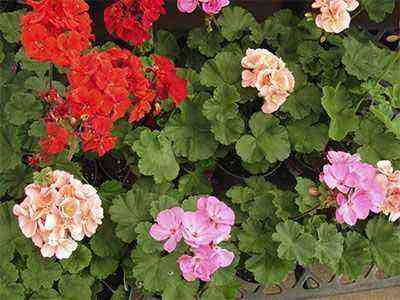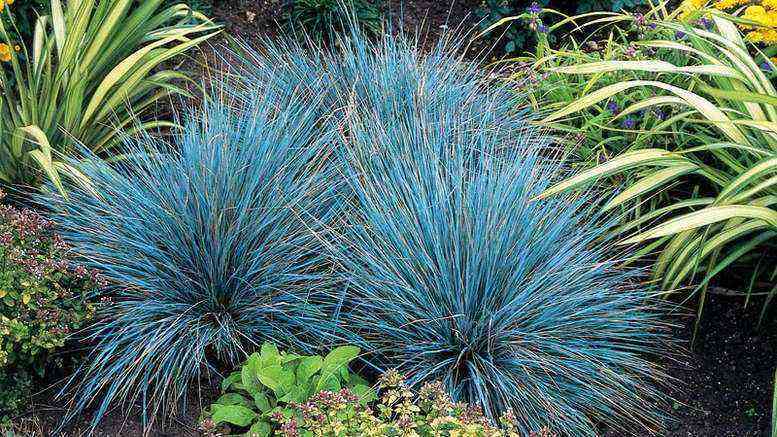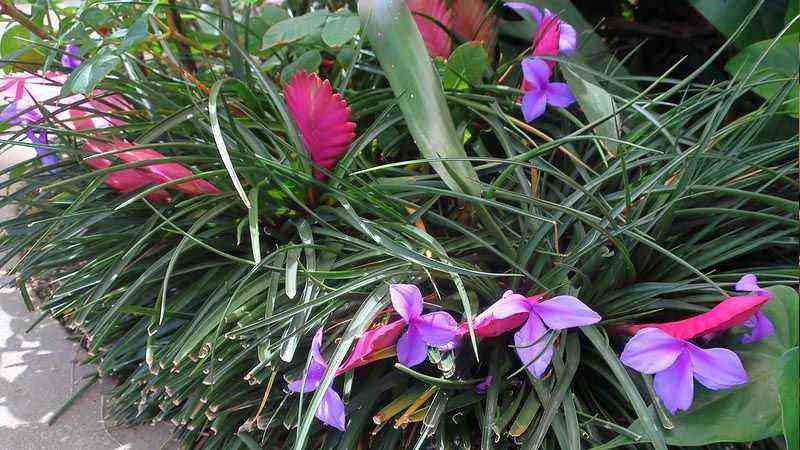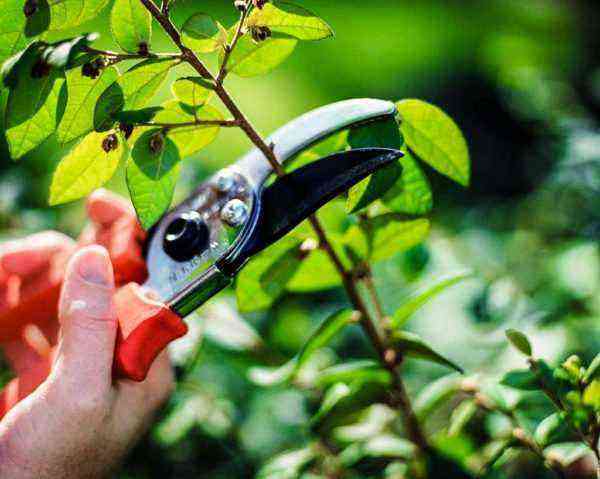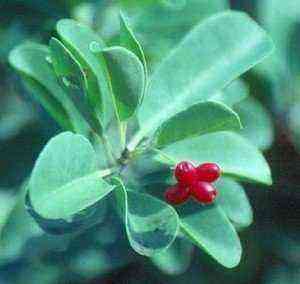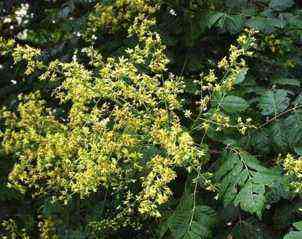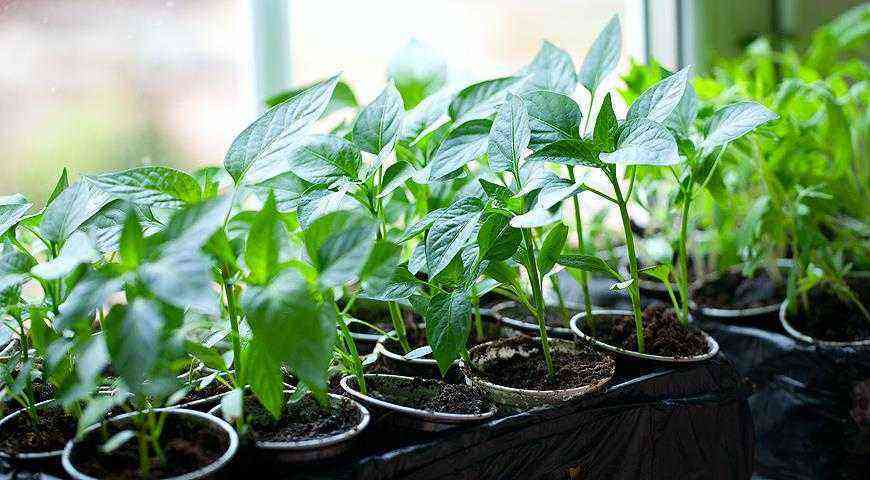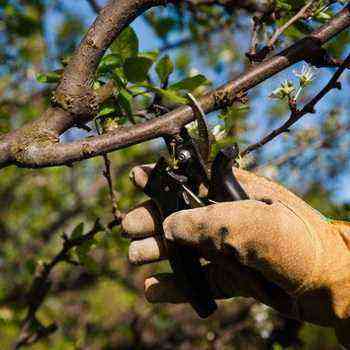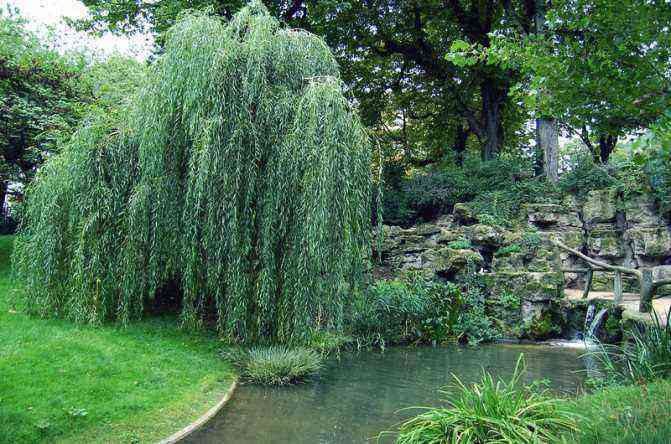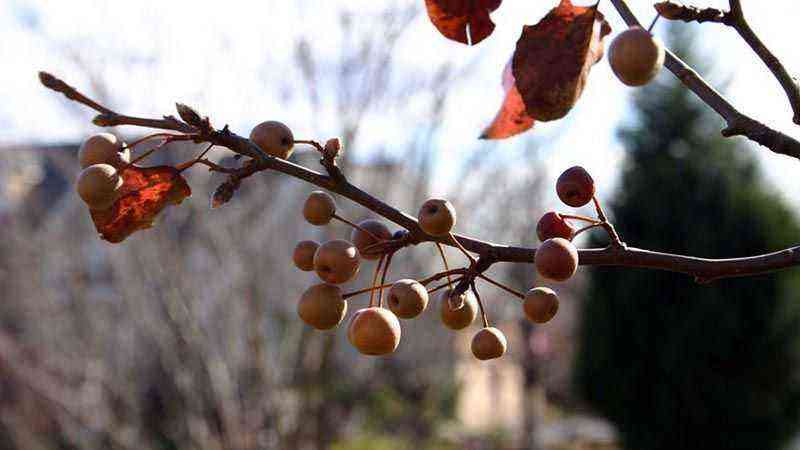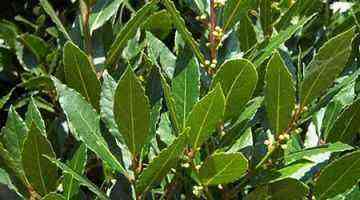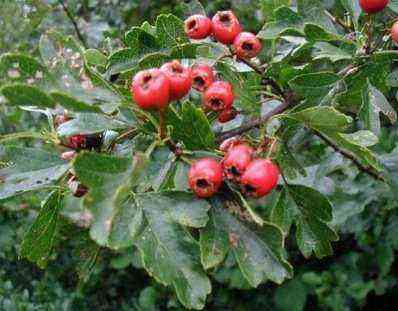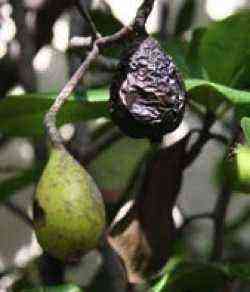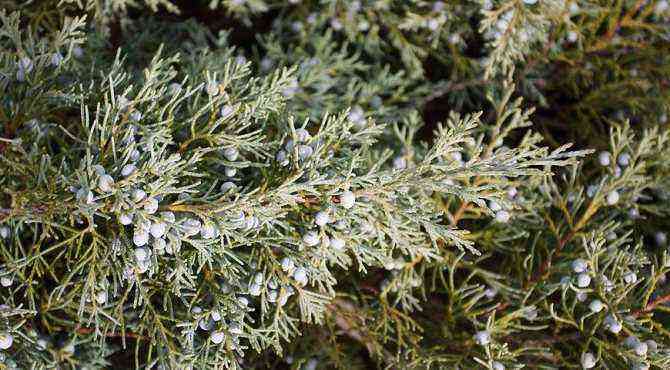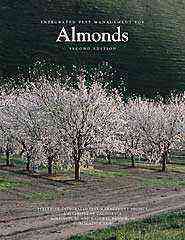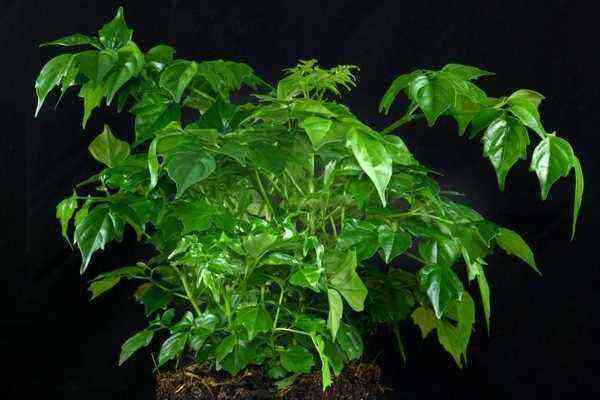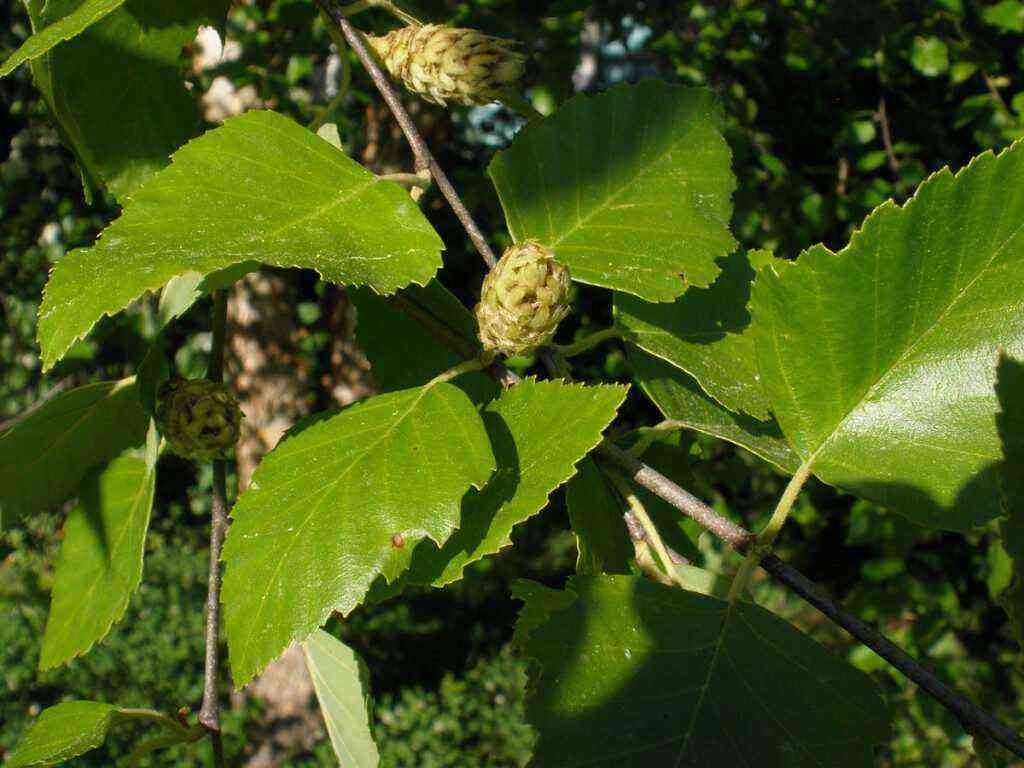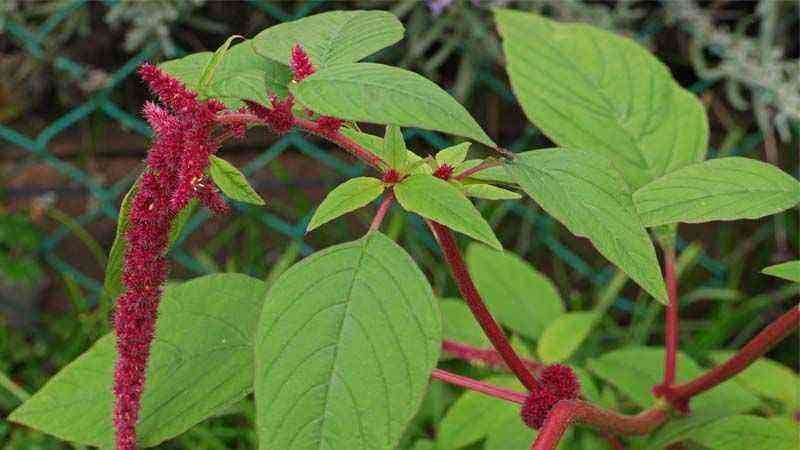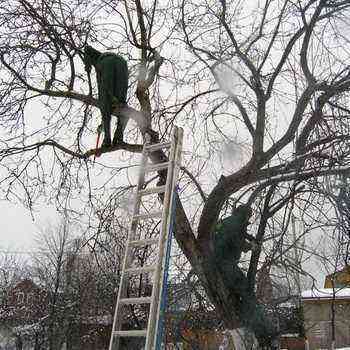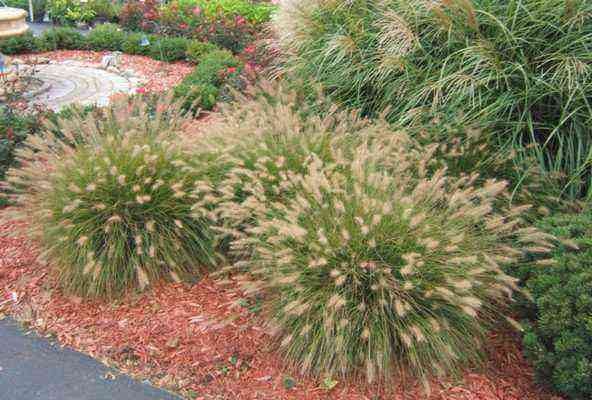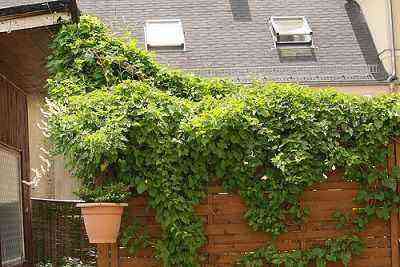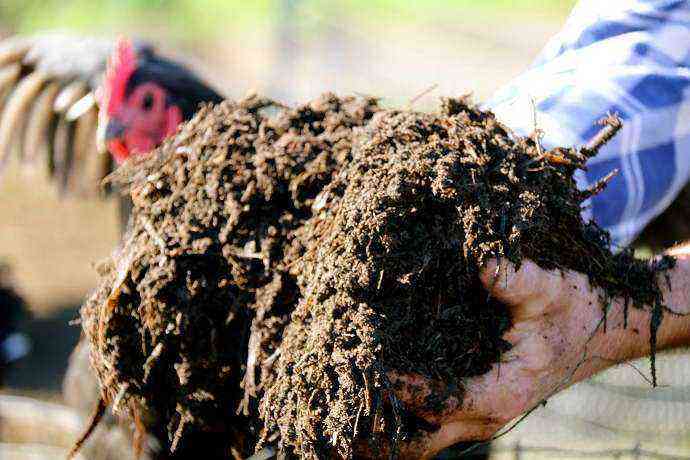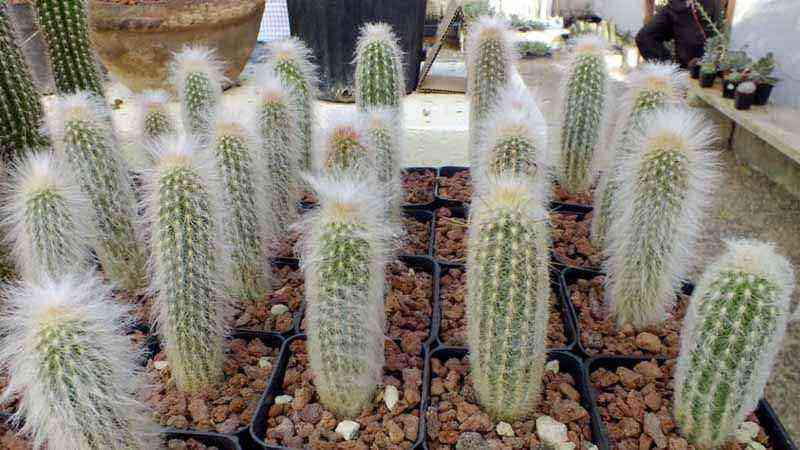There are indoor plants that cannot be kept at home – I would like to mention the photos and names of these flowers in this article. We all subconsciously strive for unity with nature, someone has a summer cottage, and someone, for lack of it, seeks to create a green corner in their apartment. Sometimes we are impressed by the beauty, bright colors of the next flower, we strive to acquire it as soon as possible in order to decorate our home.
When buying a flower, we do not always think about the consequences and sometimes we start to feel bad or our pets suddenly fall ill. Among the inhabitants of the green world there are a lot of poisonous representatives, sometimes the most beautiful of them turn out to be absolutely unsuitable for home keeping.
What indoor plants cannot be kept at home? Of course, it is not possible to describe all of them here, but I would like to focus on the most common ones – those whose attractive appearance we admire in the windows of flower shops. Some varieties contain toxic compounds, emit poisons, harmful pollen into the atmosphere. Some flowers are not recommended to be planted where you sleep. If you have small children or curious four-legged pets who strive to taste everything, you should be doubly careful when choosing home colors.
Planting dicenter
Dicentra is an exceptionally moisture-loving plant, it needs drained, well-moistened soils with enough humus. But if the water stagnates, then its large roots quickly rot, take this nuance into account when you plant a dicenter in your area.
For planting dicenter, you can choose any corner of the garden. On the sunny side, it blooms faster, but the bush itself remains small. In the shade, the bush grows strongly, and the flowers bloom a little later, but the flowering period increases.
I planted it in the company of peonies and primroses (as advised by experienced gardeners). As a result, I got an incredibly beautiful “bouquet” in the flower bed. The dicentra is very friendly and gets along well with other types of plants. I experimented with peonies and primroses, and my neighbor in the country designed the patio behind the country house: he planted three varieties of dicentra in combination with Altai doronicum and white daffodils. It turned out very effectively.
You can find dicentra seedlings in our catalog, which contains offers from various online stores of seeds and planting material. Choose seedlings of dicentra

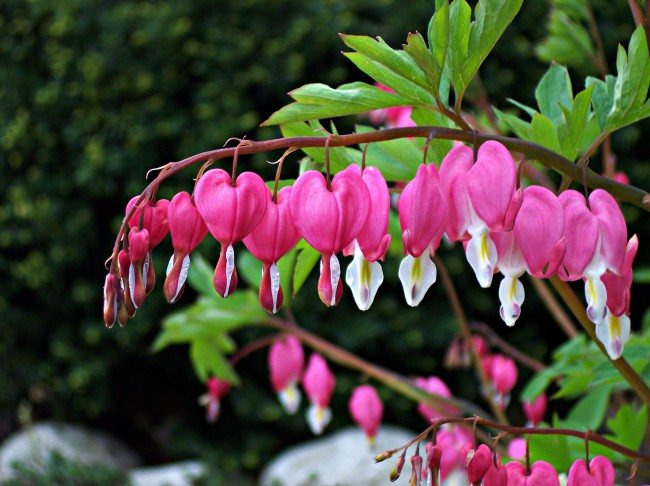
The Dicentra plant is known for its original flowers in the form of hearts.
Copper and Velvet
In plant growing, 5 types of indoor flowers are most often used:
- Large-root (A. macrorhiza) – a two-meter beauty with rounded thyroid leaves, yielding scarlet fruits;
- Amazonian, or Alokazia Sander “Polly” (A. amazonica, A. sanderiana “Polly”) – medium-sized houseplant, decorated with elongated arrow-shaped dark malachite leaves with prominent white veins and jagged edges, blooming in the room, but does not form fruit;
- Copper-red (A. cuprea) – the most poisonous and exotic species in terms of color: its leaves are crimson below and green with a copper tint on top;
- Fragrant (A. odora) – a compact plant on which small fragrant flowers bloom;
- View “Black Velvet” (A. “Black Velvet”), which has black-purple velvety foliage with white convex veins.
Content
Dicentra is an adorable and delicate flower associated with many romantic legends. In our latitudes, it is better known under the name “Broken Heart”. The shape of the flower is very much like a heart, therefore, in almost every country, the name is somehow connected with this symbol of love and devotion.
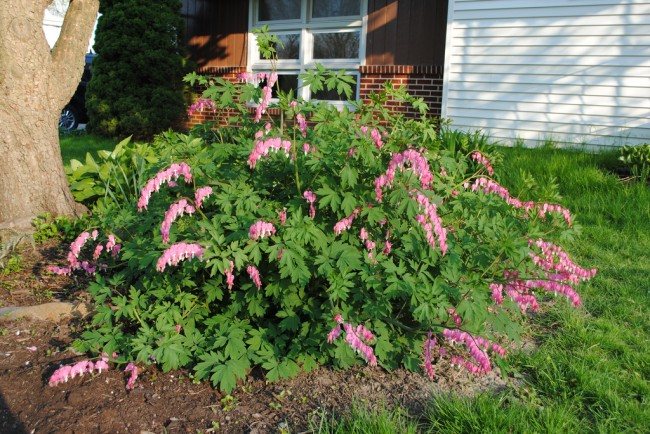
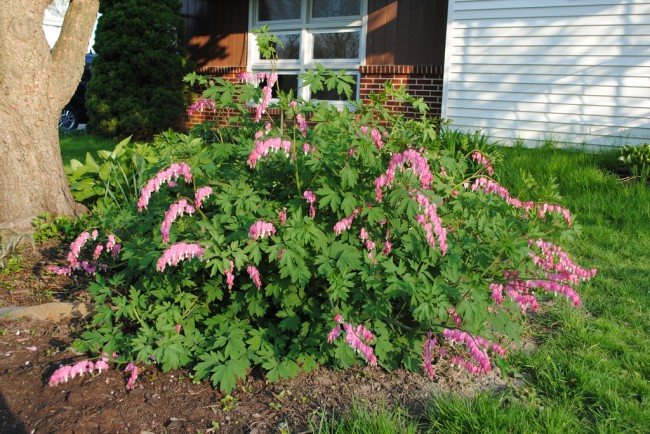
Dicenter – a symbol of love and devotion
In Europe, the dicenter flower did not initially grow. His homeland is the Far East, China and North America. To our mainland it’s cute plant came from Japan, and was first described by Linnaeus himself.
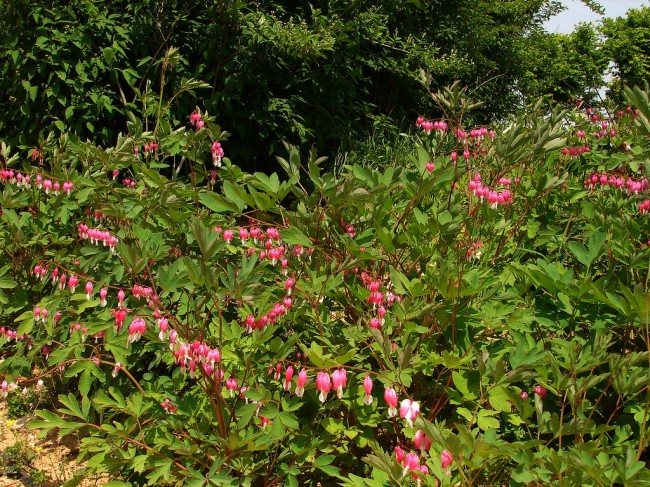
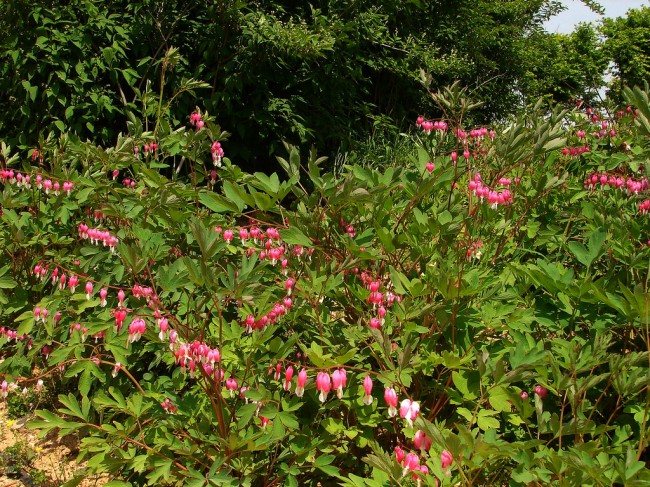
Among all varieties, there is a color of a variety of shades – from white to red, as well as yellow
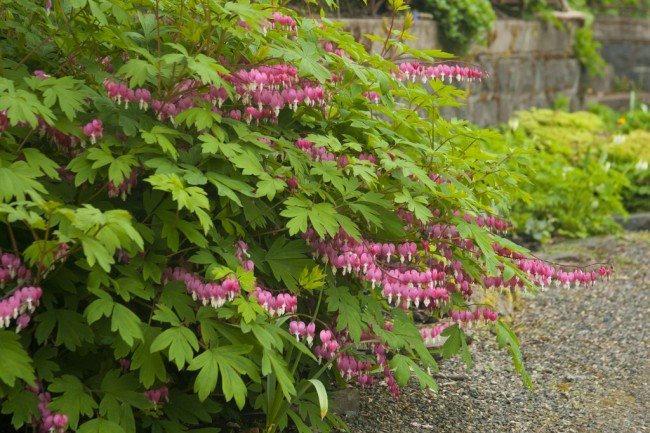
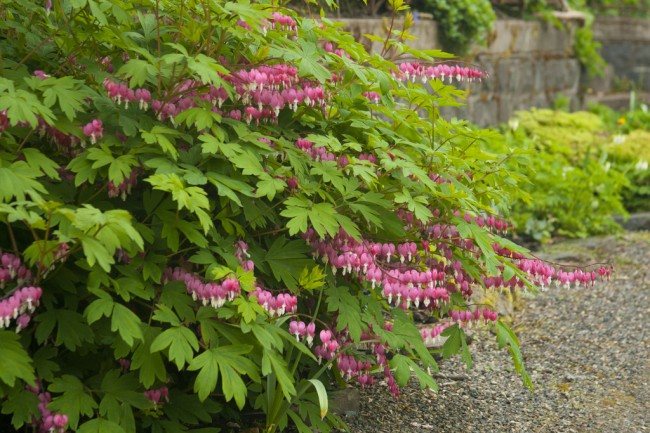
The homeland of the plant is Asia and North America
Smart Weed Barometers
The general opinion that weeds can only do harm is not entirely true. Some of these plants have the unique ability to signal an imminent rain. And they do it in completely different ways.
For example, a dandelion, which causes a lot of trouble for gardeners with its vitality, closes tightly long before the first raindrops. The plant anticipates bad weather 8 hours before precipitation. If the sun is shining in the sky, and a yellow meadow covered with dandelions abruptly changes color to green, there will certainly be rain.
In almost the same way, it indicates the upcoming rain and starfish. There is only one difference: it does not open flowers at all in the morning if bad weather is expected.
Another plant – the mullein – tilts its stem in different directions of the world, thereby unmistakably showing the weather for the day. If the inflorescence is bent to the east, then the sun will shine all day. The opposite slope indicates that it will be cloudy. No wonder in Germany this plant was nicknamed “meteorological candle” for its talents.
Types of dicenter
In horticulture, about ten types of bleeding centers are used out of the existing twenty. To date, very diverse varieties of dicentra have been created to satisfy any aesthetic and climatic needs.
D. spectabilis
The first species described by Karl Linnaeus was magnificent dicentra or spectabilis. It is this plant with its flowers that incredibly resembles a heart. Its bushes are quite high (up to a meter), especially in comparison with other species. The leaves are dissected and very beautiful, so that even after flowering, D. splendid attracts attention. Such varieties are interesting:
- Alba (white flowers, bush slightly lower – up to 70 cm);
- Gold Heart (pink flowers and bright golden yellow leaves);
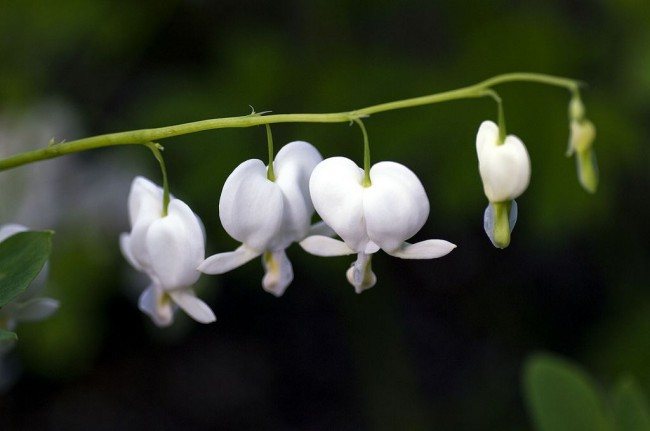

Dicentra spectabilis, white сорт
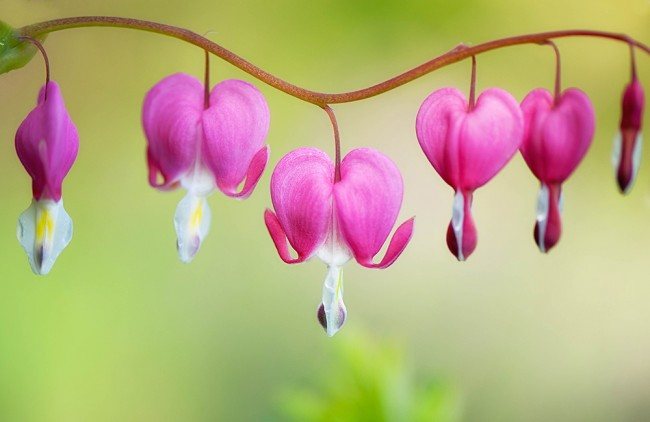
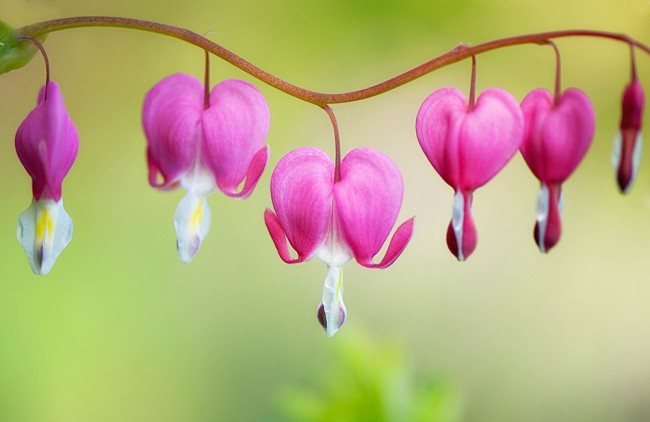
Dicentra spectabilis, Gold Heart cultivar
Advice! If you love autumn, get the GoldHut variety. Golden foliage will delight you with its color even in summer.
- Valentine (rich cherry blossoms).
Read also: What is the color of the autumn poplar leaves

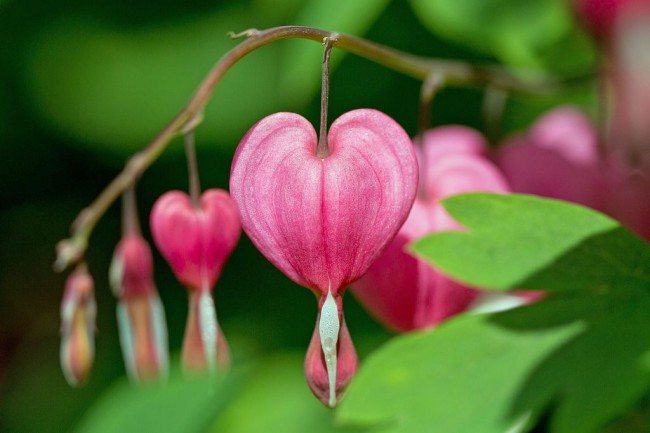
Dicentra spectabilis, сорт Valentine
D. Formosa
The dicentra is beautiful only up to 40 cm, but has graceful white (Aurora), cream (Ivory Heart), pink (Adrian Bloom) and red (Bacchanal) flowers. An interesting variety with unusual silvery leaves – Spring Magic.
The beautiful D. blooms in the summer months.


Dicentra formosa, cultivar Aurora
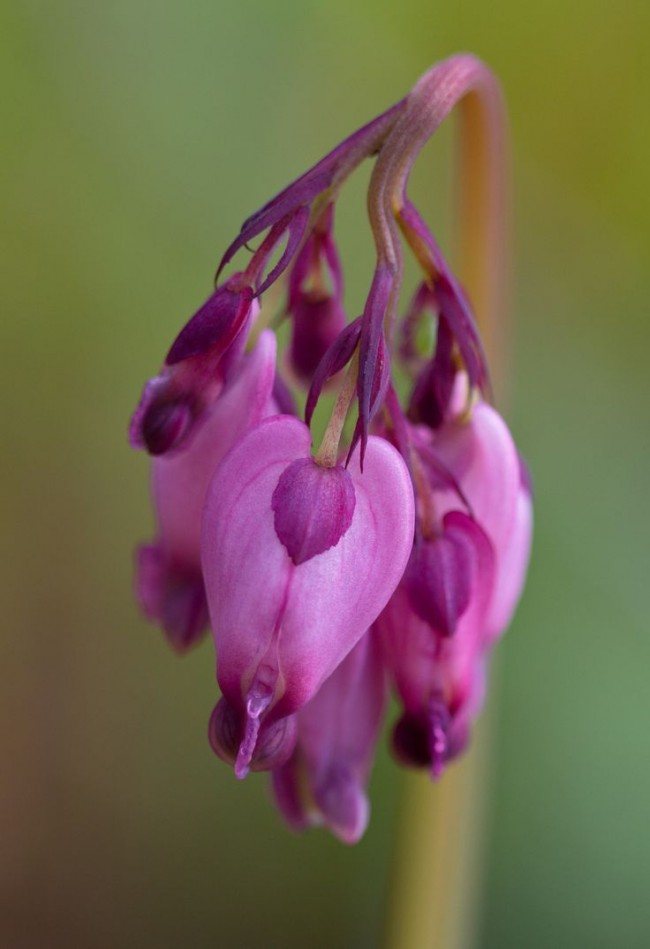
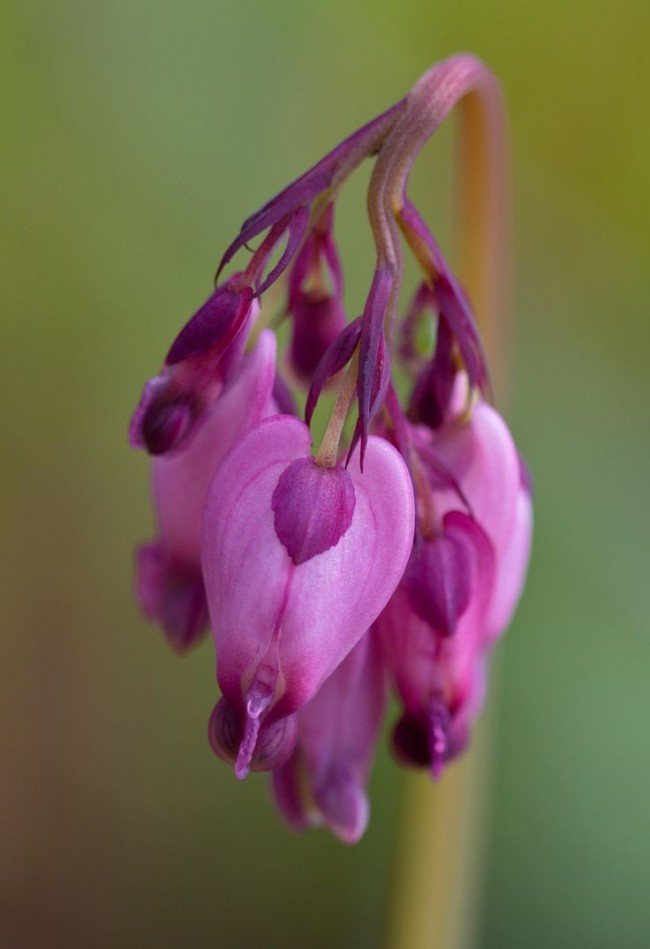
Dicentra formosa, сорт Adrian Bloom
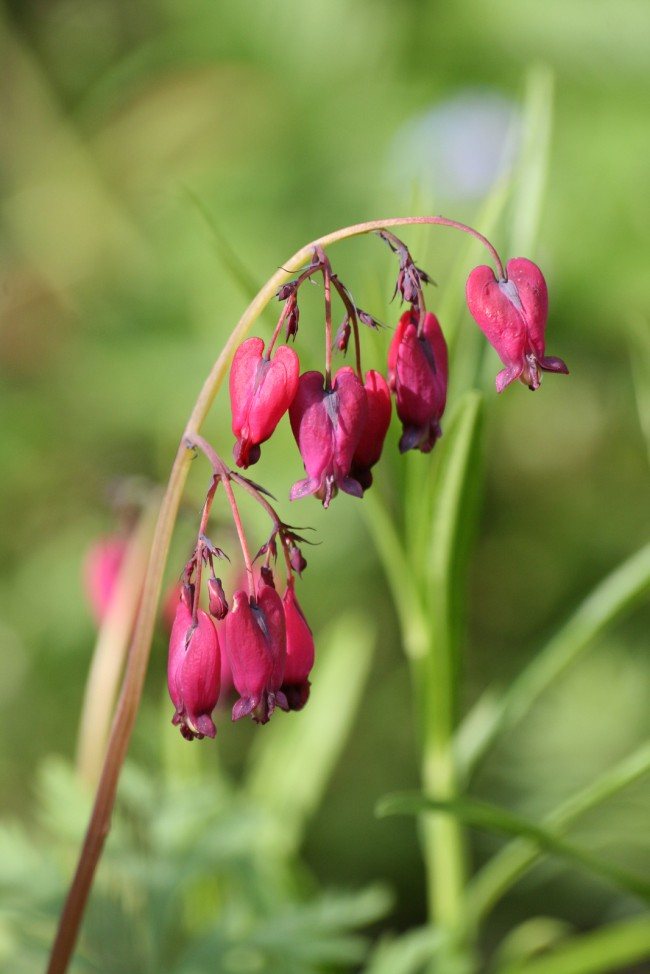
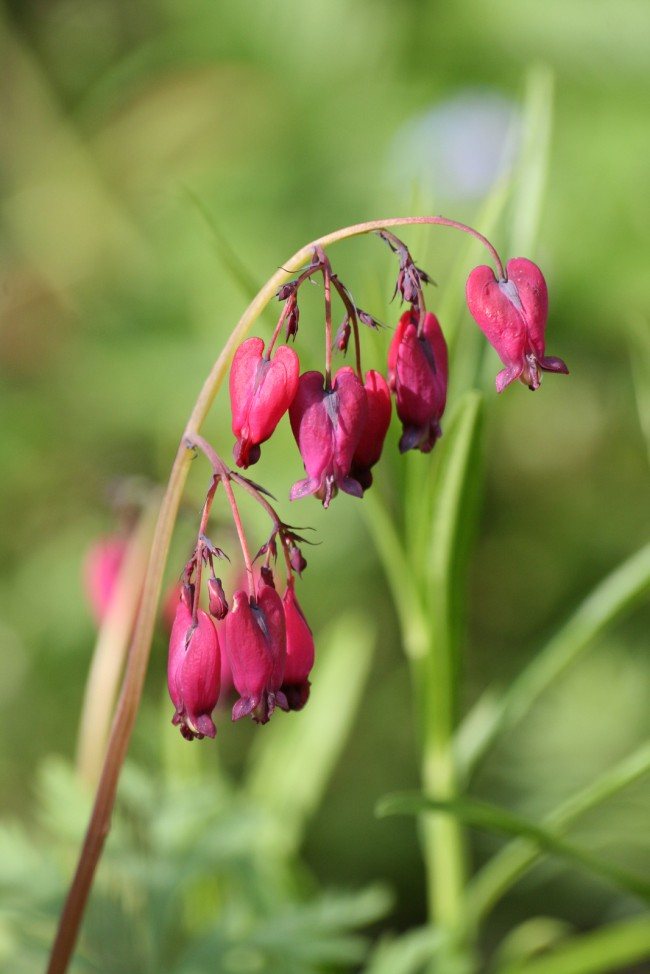
Dicentra formosa, cultivar Bacchanal
Herein D.
The center is excellent, or exceptional, far below the magnificent. The plant stretches up to 25 cm. But it blooms from May to the very frosts. It easily tolerates heat, so it is well suited for gardeners from regions with a large temperature range. The leaves of D. superb are fern-like. Colours flowers are limited to pink and white.

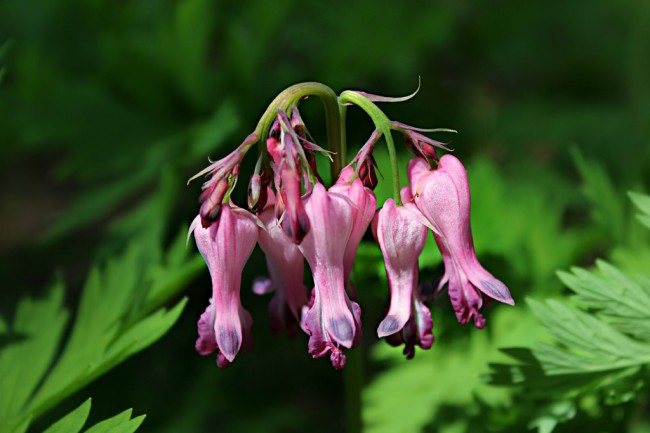
D. scandens
Dicenter climbing is an atypical, liana-like plant. The length of its branches reaches two meters, but they spread along the surface of the earth. In our latitudes, this type of dicentra is most often annual.

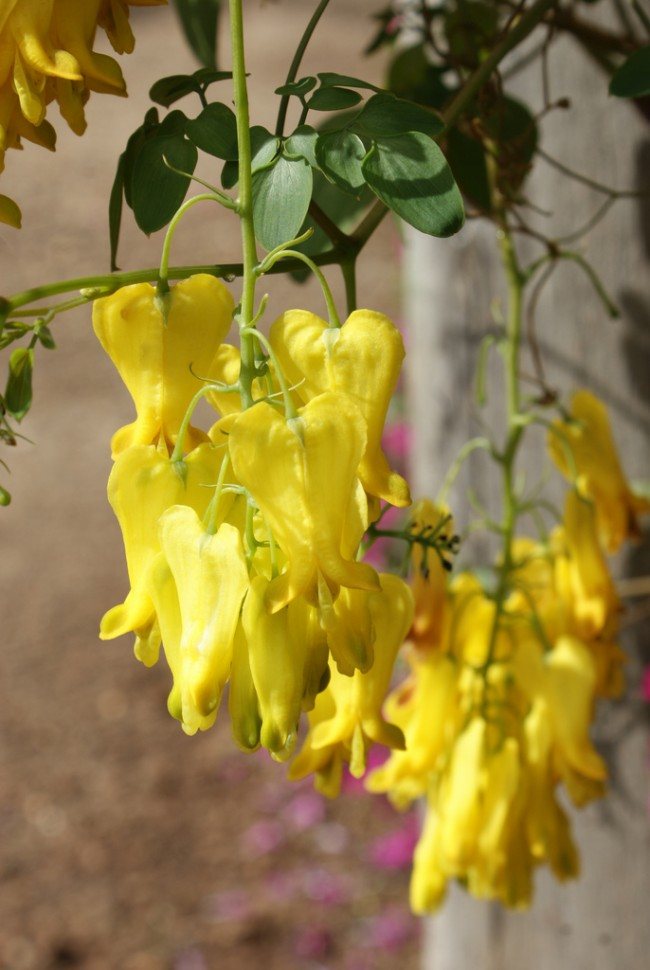
Advice! If the winters in your area are harsh, try the frost-resistant variety “Golden Tears”, and the dicentra flowers will bloom in your the garden until late autumn.
D. peregrina
The vagrant dicenter is a real long-liver. Representatives of this species grew in the East for a thousand years ago. With its tiny size (15 cm), this plant has large cut flowers of white or violet-Pink colour.
Particularly noteworthy is the Burning Hearts variety, bred on the basis of D. excellent and D. vagrant. Its flowers are bright, almost red, and the leaves are silvery.
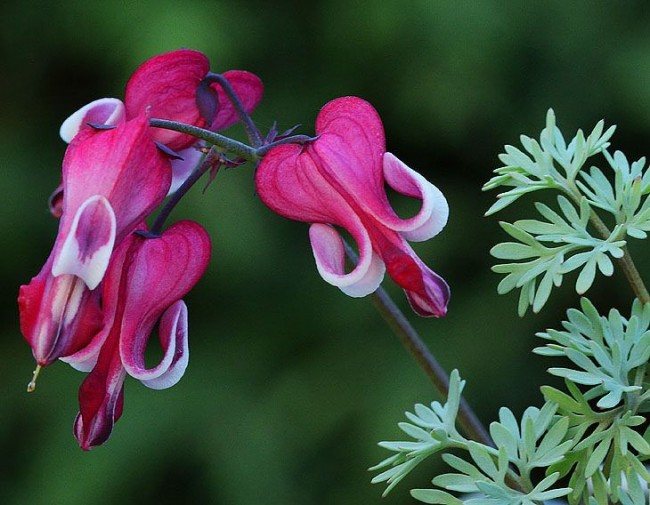

Advice! Decorating your garden dicenters of different types, you can achieve constant flowering from May to the end of autumn. The gorgeous dicenters will perfectly fit into landscapes с bodies of water, and D. beautiful will serve as a wonderful design for curbs. Rock gardens will become even more beautiful thanks to D. creeping and D. vagrant, originally growing in the mountains.
Planting and caring for a dicenter (especially for adapted varieties) are simple processes.
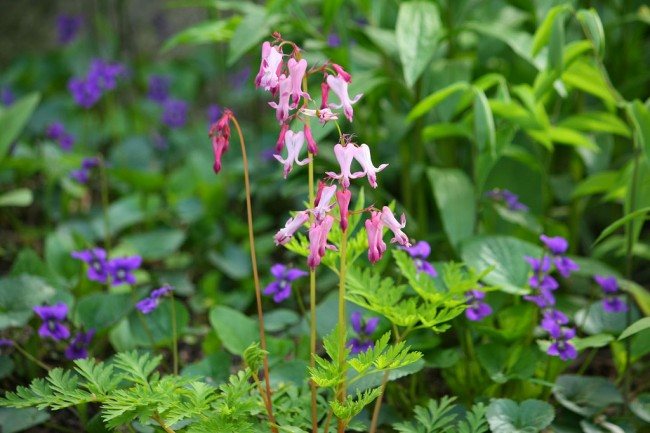
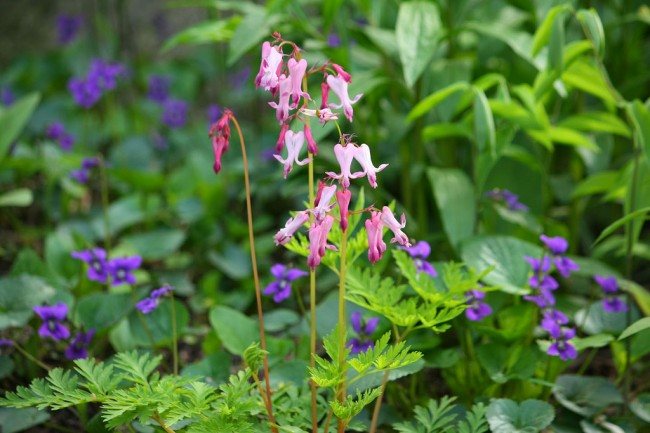
Carved heart of tropical swamps
This moisture-loving exotic came to us from the tropical forests of India, Ceylon, Malaysia. More than 70 species are known, differing in size, shape and foliage shades. They are united by the structure of the sheet plate:
- similarity of outlines with a heart or a shield;
- a thick vein that stands out from the upper and lower sides of the leaf, contrasting in its color with the general background;
- uneven edge;
- leathery, dense texture of the leaves;
- water stomata (hydrators) through which excess moisture is released.
Curious: The ability of a plant to “cry” is considered in everyday life as its useful habit: this is how a weatherman predicts a downpour.
Features of landing
Since Dicentra is a bush, as a rule, perennial, to the selection of a place on flower beds you need to be careful.
Where to plant?
A properly planted plant will not cause difficulties, and growing dicentra will turn into a pleasure. When choosing a site, consider the following criteria:
- Solar light… The ideal option would be partial shade. Bright sun will cause flowering to stop quickly and can negatively affect the leaves. In full shade, the flowers will not bloom for a very long time;
- Fertile soil. It is best to pre-feed the soil with humus (3 kg per meter) and standard mineral fertilizer for garden plants (15 g per bucket of water);
- Drainage. Too clay and wet soil is best mixed with peat or sand to avoid rotting of the root system from stagnant water.
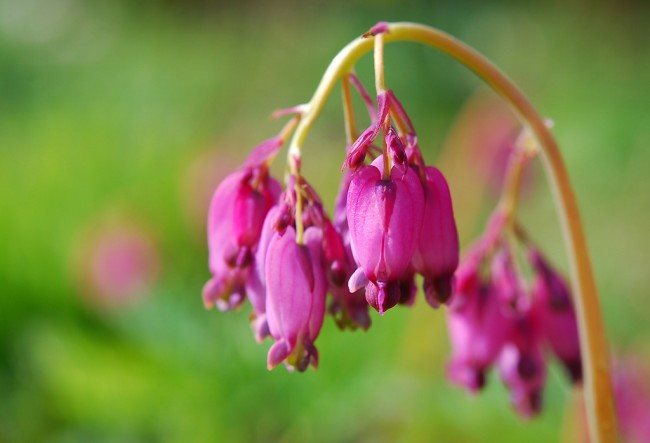
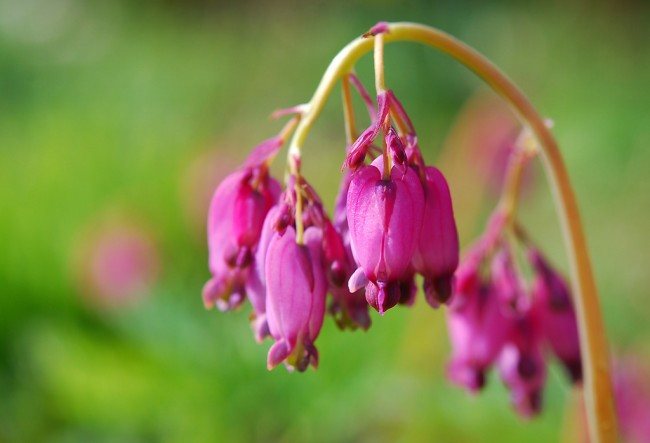
How to plant?
Pit for bush should be dug at a depth of 40 cm and have approximately the same diameter. Do not forget to leave a distance between the bushes (half a meter will be enough).
Drainage is laid at the bottom of the hole – crushed stone or broken brick… Loose soil mixed with compost is filled in the remaining space. If the earth needs to be lightened, sand is added. Limestone chips mixed into the soil have a beneficial effect on the dicenter.
Advice! All procedures related to planting and transplanting the dicenter should be carried out with gloves. The roots of this flower are poisonous. Also, make sure that the animals do not eat the edges of the roots that have been knocked out of the ground.
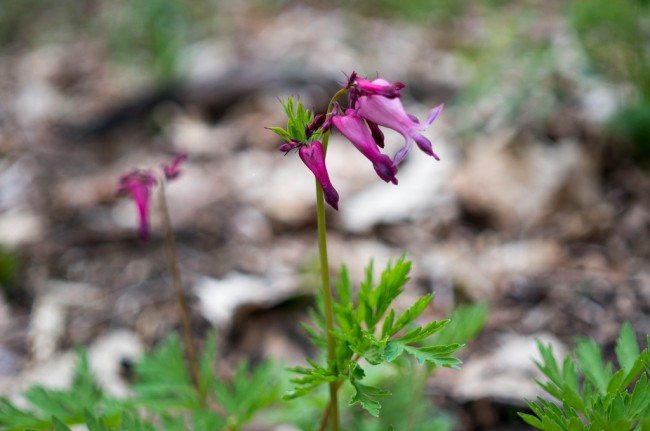
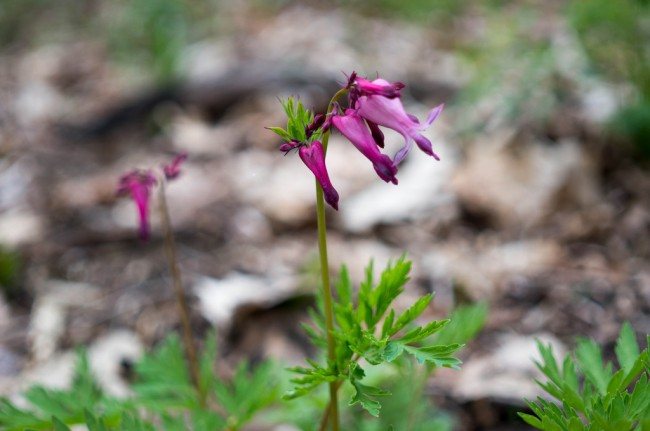
Dicentra – an extraordinary decoration of the garden
What is culture called scientifically?
Spathiphyllum, or Spathiphyllum (Spathiphyllum) belongs to the genus of perennial evergreen plants of the Aroid family (Araceae).
Here you can see a photo of this houseplant.
Reproduction
Theoretically, there are three options for reproduction of the dicentra – by seeds, by dividing the rhizome and with the help of aerial sprouts.
In practice, in our latitudes, the seeds of the dicenter are not used for cultivation. Firstly, because flowers practically do not produce them. Secondly, it is very difficult to grow a full-fledged bush even from purchased seeds.
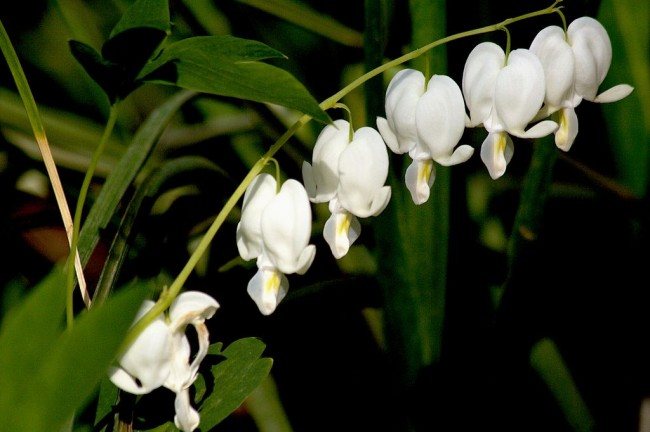
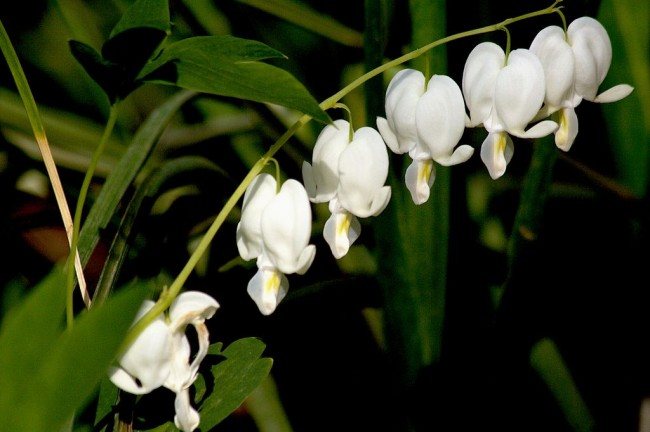
In Russia di
Division of roots
Division is carried out no more often than once every three years, but also no later than five years after planting the plant. This is done before the awakening of the shoots (in early spring) or after flowering (the time depends on the variety).
The dicenter is carefully dug out. The roots are cleaned and separated. You need to use a sharp knife so as not to injure the plant once again. Divide the root into parts with several buds. The sections are sprinkled with ash. Delenki are planted in a shaded place and watered with water heated in the sun. After rooting, they are transferred to a prepared flower bed. The algorithm is as follows:
- Preparation of holes in a flower bed with a certain distance, a reasonable size of the divisions;
- Placement of divisions into holes. It is better to put 3-4 things in one hole so that the bush turns out to be lush and blooms in the first year;
- Falling asleep and compacting the earth;
- Watering. The water must be preheated in the sun.

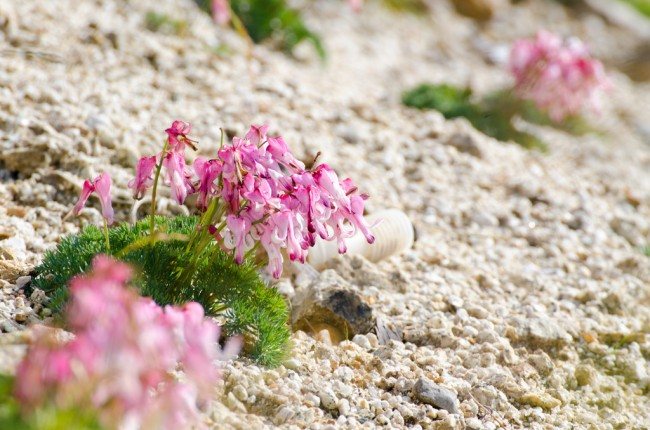
Advice! Let the rhizome dry before dividing. By getting rid of excess moisture, it will become more elastic and pliable.
Cutting
Reproduction by aerial shoots is carried out in the spring. Choose a shoot growing at the base of the bush and cut it off with a sharp knife. The stalk is placed in a growth stimulator (for about a day), after which it is planted in the soil watered with warm water and covered with a film. The roots are formed within a month, but it is better to transfer the shoot to the flower bed after a year.
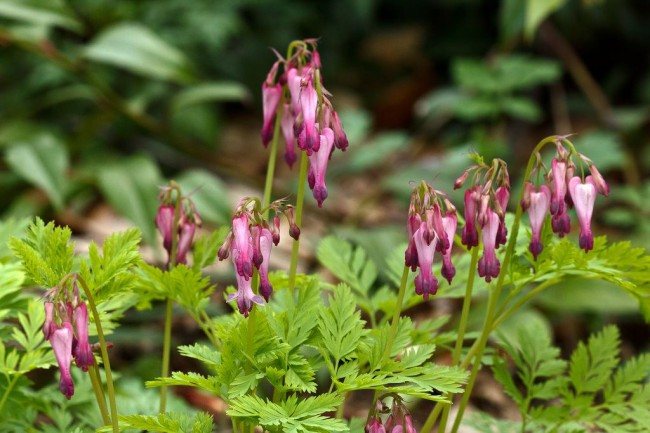
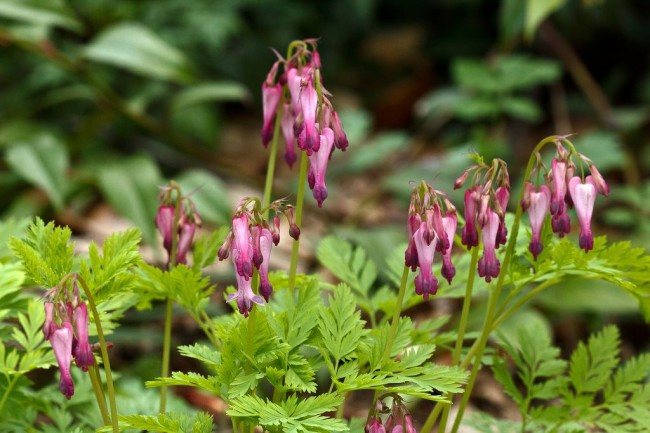
Dicentra excellent rich pink-lilac color
What else is called and is it correct to do so?
Women who are interested in the unusual properties of the flower may stumble upon information that the plant can drive men out of the house. This can provoke them, get rid of spathiphyllum.
This is due to the teachings of Feng Shui, in which the plant is mistakenly called “Widow’s Tears”, this information terrifies the owners of the flower, many interpret the scientific name in this way from the Chinese language, arguing that it is in no case to keep this flower at home.
This is fundamentally wrong, in fact, the name spathiphyllum comes from the Greek, and does not carry a completely different meaning. The nickname “Widow’s Tears” is possessed by the hoya flower, which is associated with a bad omen.
Flower-talisman “Women’s happiness” is able to create real miracles – a lonely woman dreaming of marriage to give wonderful love and a good caring husband. And a family, where scandals and misunderstandings are often present, will find peace and tranquility. You can believe in amulets and their magical properties, but do not forget that everything that you want needs to be achieved.
If you find an error, please select a piece of text and press Ctrl + Enter.
When growing indoor flowers, and even laying out flower beds in summer cottages, women often attach great importance to folk omens and superstitions, use various lunar calendars.
Who does not want to get their own, well-deserved piece of female happiness with the help of an indoor resident and grow a beautiful plant, which also brings big and small domestic joys.
Broken Heart Care
How to grow a dicenter? You will not have any particular difficulties when leaving. Watering and feeding the plant on time, you will achieve excellent results.
Temperature
Dicentra copes well with temperature changes, but is afraid of spring frosts. Freezing is especially dangerous for young bushes. To avoid this, in spring, the shoots of the plant are covered with a film or other non-woven material. The shelter is usually not prepared for the winter. If the frosts are very severe, the ground around the roots can be covered with a layer of peat (up to 8 cm) or spruce branches. When creating such insulation, you need to make sure that overheating does not begin.
Read also: Film heater for the floor
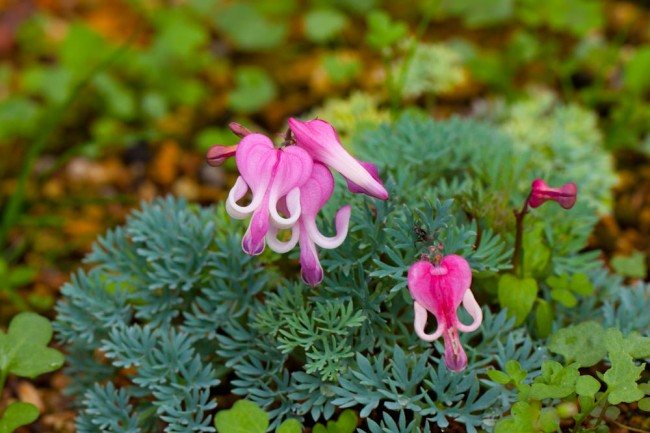
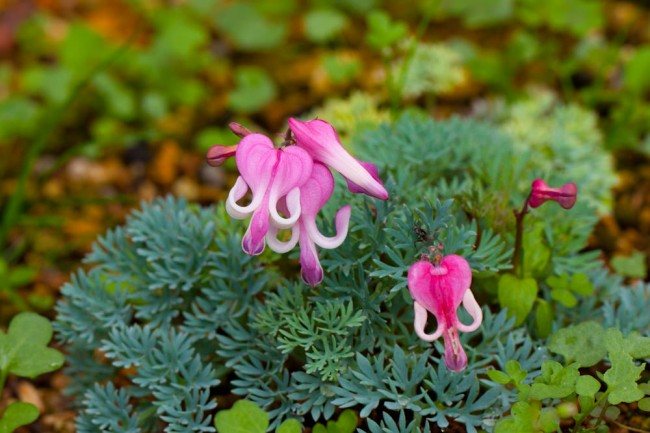
Low dicenters look good in mixed plantings – in flower beds, borders, on slides
Lighting
It has already been mentioned that the dicenter calmly withstands both light and shade. But it’s better not to go to extremes. Partial shade will be the optimal mode for long-term and timely flowering of the shrub.
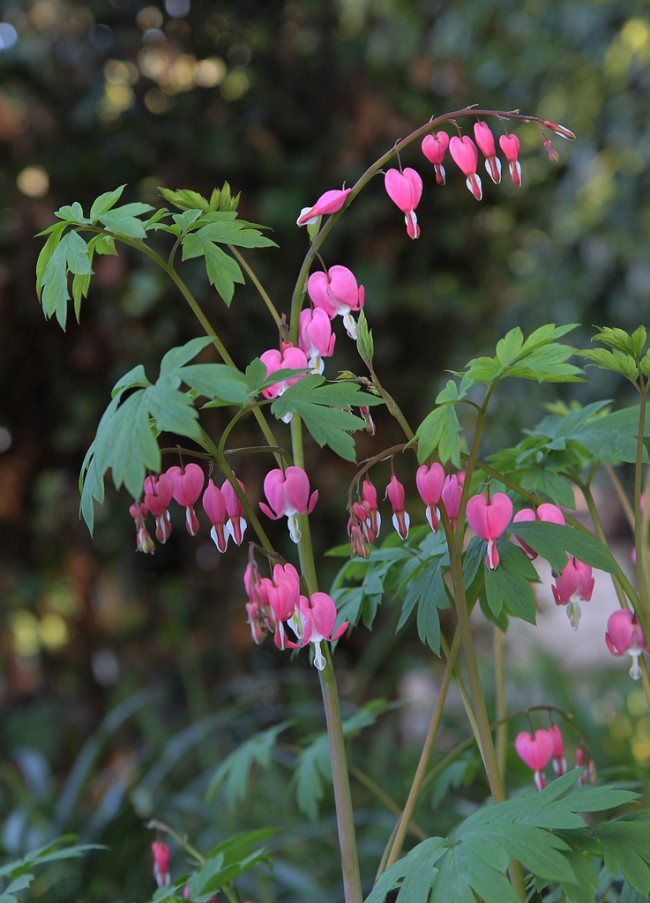
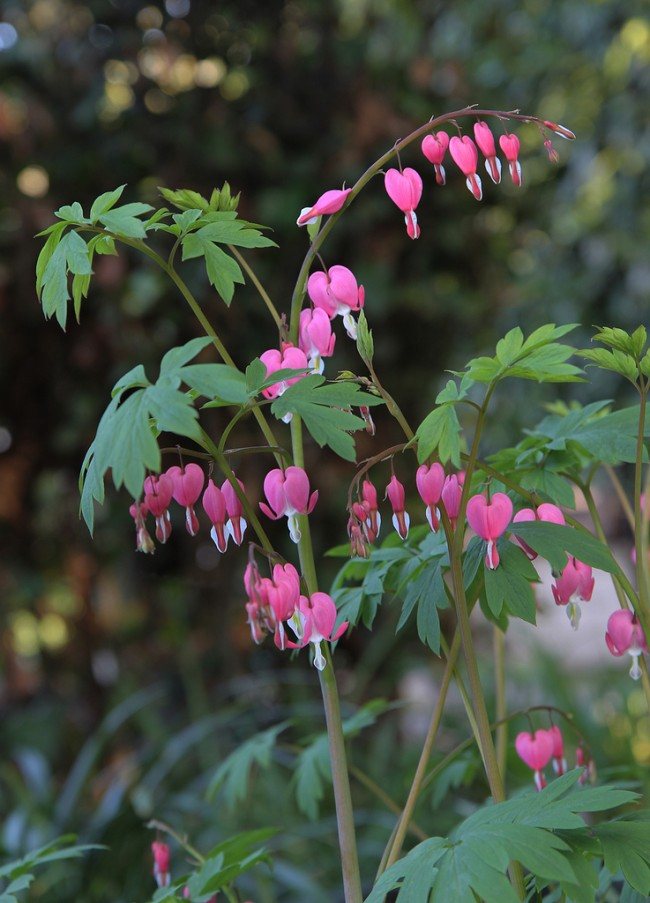
In our strip, the most common Dicentra is magnificent
Humidity and watering
Neither drying out nor waterlogging of the dicenter should be allowed. Stagnant water in the soil negatively affects the roots and can lead to the death of the plant. Drainage, therefore, plays an important role in the life of a shrub planted in moist soil.
The frequency of watering depends on the established temperature and the rate of soil drying. Remember to loosen the soil after watering.

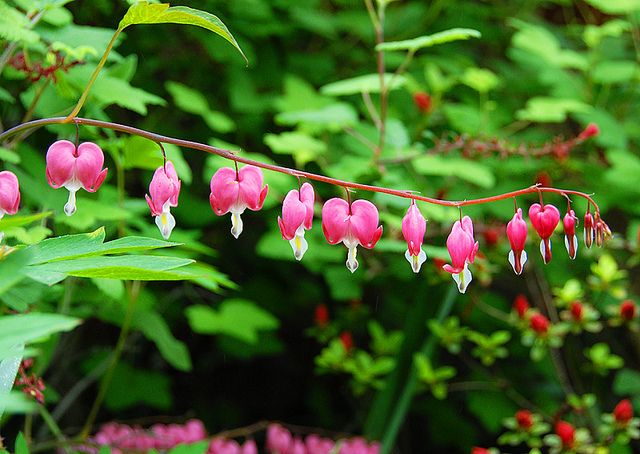
Charming hearts of dicenter
Additional fertilizing
To obtain bright buds in the spring, the dicenter is fed with superphosphate. Another 3-4 such feedings are carried out during the flowering period. When the plant has faded, it doesn’t hurt to feed it with a nitrogen-containing fertilizer.
Organic fertilizers are also useful. At the end of winter, compost and urea are scattered under the bush, and mullein is used in the fall.
It is also important to add soil in the spring, otherwise the roots will come out, which is not very good, due to their toxicity.
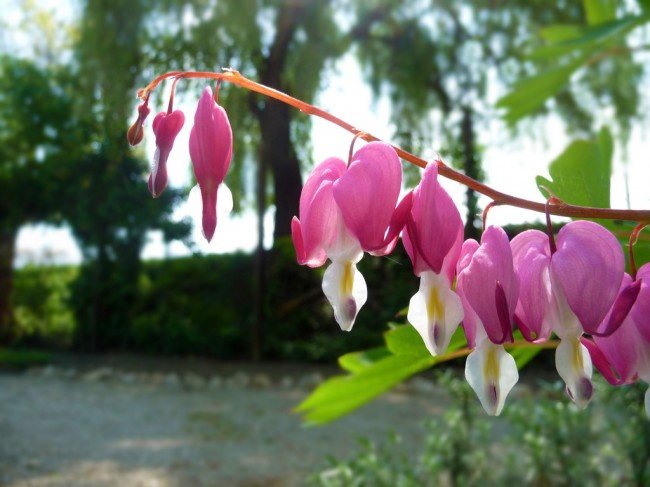
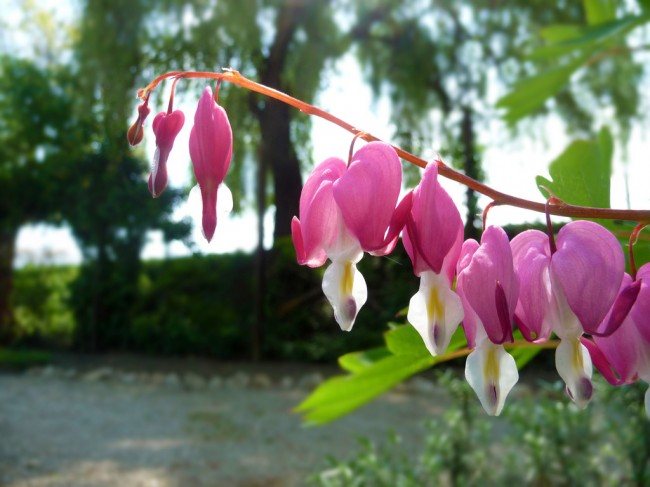
The graceful and beautiful dicenter will not leave anyone indifferent
Trimming
To prevent flowering from fading from year to year, wilted flowers must be removed. At the end of the season, the shoots are completely cut off, leaving about 5 cm.
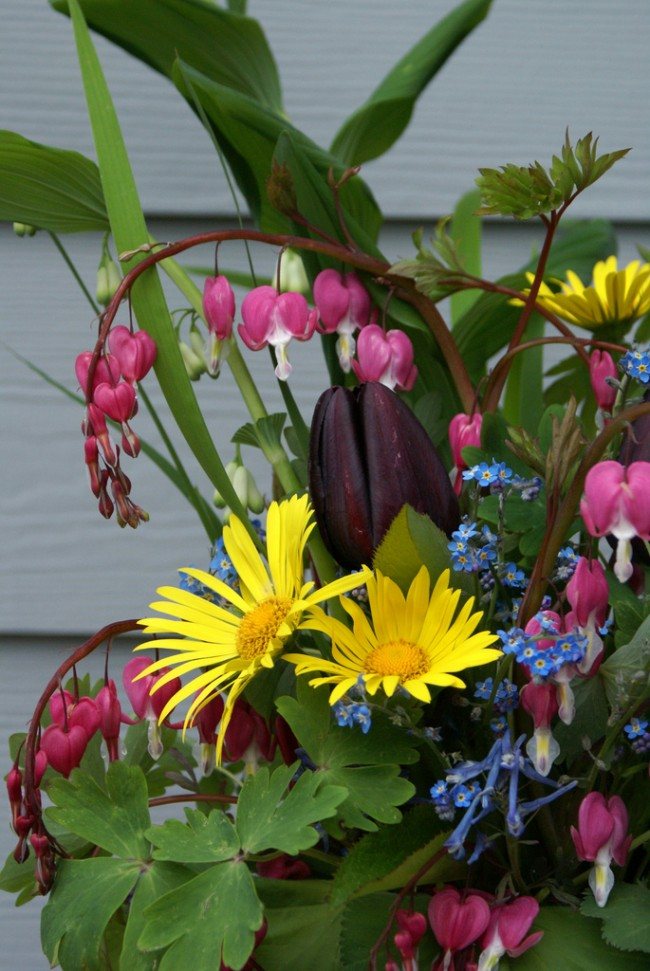

Dicenter in a bouquet
Diseases and pests, ways to deal with them
Dicenter is a plant resistant to diseases and pests. To avoid problems, it is necessary to carry out preventive spraying of the bush with aphids and snails (for example, “Iskra Bio” or “Zolon”).
To prevent annular spotting from appearing on the leaves, and to prevent microplasma disease from overtaking the flowers, weeding should be carried out regularly. A month before planting the bush, the land must be treated with a formalin solution (5%).
Houseplants and related signs
For some, green people are a favorite hobby or just decor for the interior. However, along with this, many flower growers pay attention to signs, study the influence of flowers on our lives. An indoor pet can easily become a kind of talisman, a keeper of happiness, a magnet for positive events. For example, one has only to look at oxalis (room oxalis) to notice its incredible resemblance to the four-leaf clover – an ancient powerful symbol that attracts good luck.
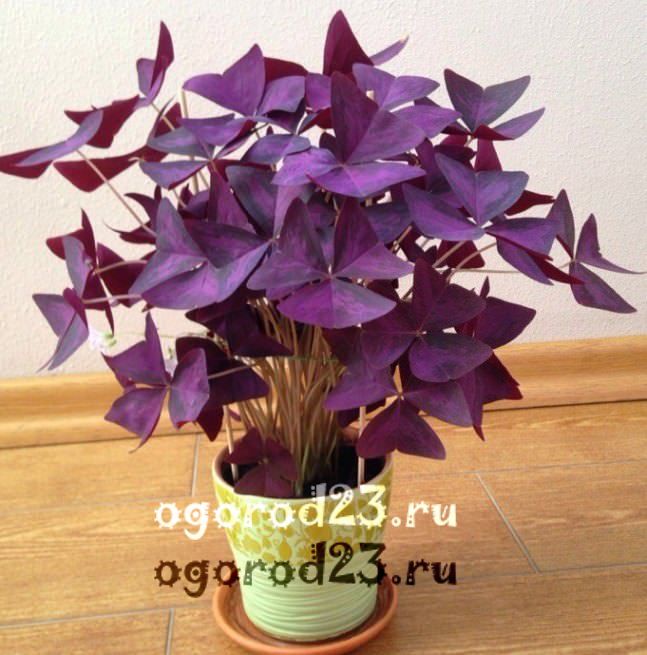
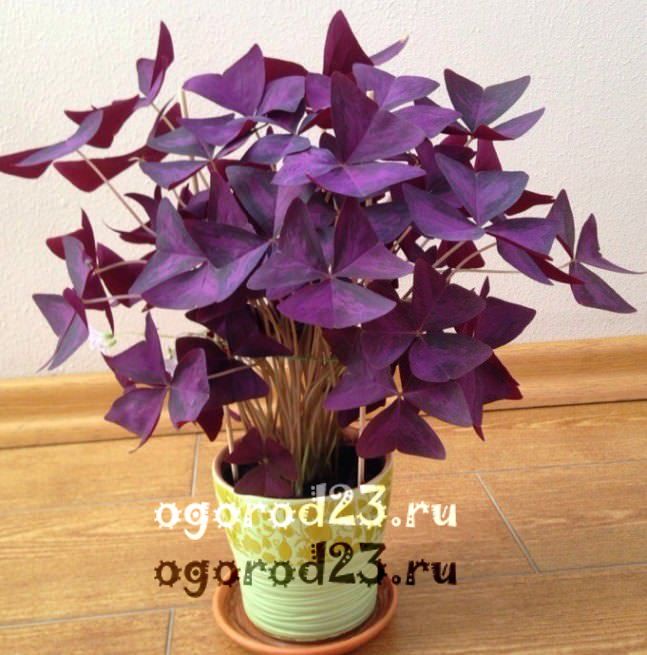
Oxalis (sour)
The same chlorophytum mentioned above is considered the patron saint of a happy family life.
Strict calathea has long been considered the keeper of family relationships, and contributed to a long, happy family life. By the way, if you provide her with comfortable conditions, she will live an incredibly long time, tens of years.
Calathea
Aichrizon, whose leaves are somewhat similar to hearts, is considered a “tree of love”.
Aichrizon – the tree of love
The money tree (fat woman) is a favorite “amulet” that contributes to the accumulation of material wealth.
Fat woman or money tree
Fragrant myrtle is often presented for a wedding, because it contributes to family happiness, mutual understanding between spouses.
Incredibly beautiful hoya, which blooms with snow-white or pinkish “balls”, is recommended for placement in matrimonial bedrooms. This flower is the patron saint of lovers, helps to remain faithful, gives mutual understanding to couples.
Hoya
Violets, loved by many, are a symbol of comfort and home.
Violet
And spathiphyllum is generally the “happiest” flower (according to the majority). He is called “female happiness”, he helps single people to meet their happy destiny, married ones – to strengthen existing relationships, childless gives the joy of motherhood, and large families – harmony, peace at home, mutual understanding between loved ones. If spathiphyllum has bloomed in your home, then be sure – happiness is already on the doorstep!
Spathiphyllum blooms
There are also indoor plants and the signs associated with them are not very positive – here it is definitely worth giving priority to the vines. If you keep curly liana-like ones at home, then the male sex will bypass the women or girls living in it.
Ivy, tradescantia, roicissus (birch), hanging zebrina, campelia are the most active “muzhegons”.
Donated palms should also not be settled in the apartment.
Poor cacti got it – according to popular beliefs, they push the inhabitants of the house to drunkenness. It is also not recommended to get involved in the cultivation of cacti for unmarried virgins.
Ferns, philodendrons, along with a monster, are considered absorbers of positive energy and vitality.
Geranium, yucca, neoregelia, sansevier are also considered energetic “vampires”.
Be that as it may, practice shows that those who take all negative prophecies to heart, themselves attract problems. He who seeks finds, says ancient wisdom. There are many happy families and successful destinies of people who keep ferns, ivies, cacti in the house. So plant your favorite flowers at home, enjoy life, but be on the lookout with poisonous representatives!
The choice of green pets directly depends on your preferences, observe safety measures when caring for them, protect any flowers from contact with animals or small children. Be careful about your choice, if in doubt, you can always consult with an experienced florist or contact the appropriate flower forum with your question.
In addition to external beauty, there are indoor plants that cannot be kept at home – I described the photos and names of the most frequently purchased representatives in this article. I hope this information will help you make the right choice, create a cozy interior that will be aesthetically pleasing and safe for you and your loved ones.
It would seem that it is “female happiness”, which means it should not cry, but for some reason, droplets of water appear on the tips of the leaves of this plant. You might have heard about a weeping willow, about a monster that expels tears before the rain, or about “widow’s tears”, but for a spathiphyllum to cry, it seems unusual for you, in which case the question arises – why is the flower of female happiness crying?
In fact, guttation (this is the name of the process by which a plant removes moisture) is a very common phenomenon in botany. In nature, gutting occurs with plants growing in tropical forests; under indoor conditions, these tropical plants can also emit water, this is due to high humidity and lack of light. Simply put, a flower begins to “cry” if its roots absorb more water than the leaves can evaporate. By the way, in natural conditions, discharge during gutting is often confused with dew – water vapor that has settled on flowers and arises from the coolness. So, as you can see, the reason why the flower of female happiness cries is very prosaic.
You can find out more about all the signs and habits of this flower by visiting and reading the information on it.
Plants, including spathiphyllum, have special hydatodes, which are also called aquatic stomata. These are special pores through which the leaves, under the influence of root pressure, begin to release droplets of moisture. Usually, the release of water is observed at night, in the autumn. But do not rush to reduce watering too much for your plant, spathiphyllum loves high humidity, and the gutting process helps it maintain water balance. However, do not overflow!
Many are interested not only in why the flower of female happiness is crying, but also whether its “tears” are poisonous. We dare to assure you that there are no reasons for concern, these droplets do not have any toxic substances and they are not dangerous at all, your plant secretes ordinary water, only somewhat enriched with minerals that are taken from the plant itself (various salts, calcium, etc.) …
If you think that the reason why crying is connected with any negative moments: improper care, or maybe with a belief that predicts bad news, then you are mistaken. Gutting is a common process in tropical plants, and your spathiphyllum flower, do not forget, just originated from such places. Continue to take good care of your flower!
In those days, when radio and meteorological centers did not yet exist, people learned about the upcoming bad weather with the help of plants. Many flowers are real forecasters: they are able to make a completely reliable weather forecast. Dew drops, closed flower buds most often indicate that it is going to rain, and violent flowering portends sunny weather.
Life cycle features
The description of the plant has been known since the XNUMXth century. It flaunts its green leaves from mid-spring to the very frost. Closer to the middle of summer, he releases flowers. Later, it develops a grone, like a real grape, but very small and inedible.
Most species of this plant acquire a distinctive bright red or crimson color in the fall.
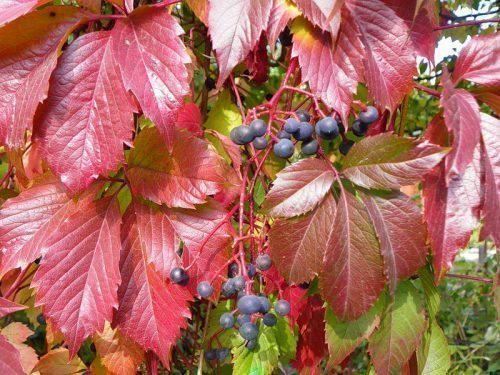
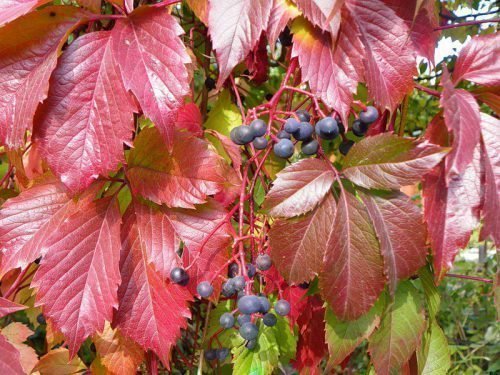
Autumn color and berries of maiden grapes
Sometimes this description does not coincide with reality: the leaves remain green until the very frost, and only in some places do they acquire a yellowish tint. This is due to a lack of light. In this case, the plant itself will not die, but in order for the eye to be pleased with the crimson shade of its leaves, you need to transplant it to a lighter place.
Leaves of “girl’s tears” are highly valued not only for their decorative properties, but also as a medicine used in folk medicine to strengthen immunity and prevent cancer.
Name and classification
Girlish grapes translated from Greek means “virgin”. This “virgin” ivy became known in Russia under the name “maiden grapes”. Its seeds are formed without fertilization with pollen from other flowers, as if an immaculate conception occurs. That is why such an unusual name appeared. There are more than 10 plant species around the world. For landscaping in Russia, two natural species and a number of cultivated varieties are mainly used, which have the same unpretentiousness, endurance and decorative properties.
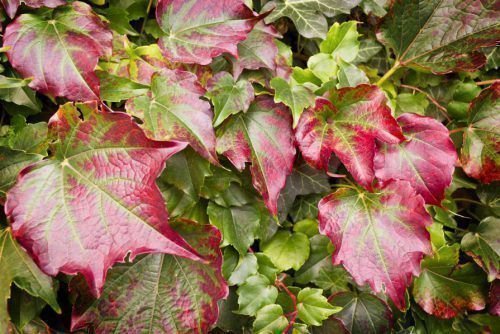
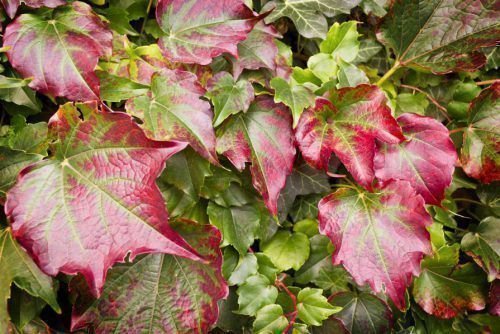
Tri-walled Vici grapes in autumn
The classification of “girl’s tears” is based on the description of the leaves:
- Three-leafed (in China, Taiwan, the Himalayas).
- Five-leafed (found in China).
- One – and three-leafed (took root in Asia).
- Seven – and five-leafed (mainly grow in North America).
Girlish ivy grapes, or tri-pointed Is a tree-like representative of the grape family. He likes sheer cliffs and cliffs on the seashore; in Russia, it is found in the south of the Primorsky Territory. The leaves of this “girlish” ivy are up to 20 cm long, have large coarse teeth and a dark green color with a shiny shade. In China, it is used for medicinal purposes.


In the photo – other types of maiden grapes
The second name of the five-leafed maiden grape is Virginian… His homeland is North America, but he is also found in China. He likes a humid environment. It can be described as follows: on its antennae there are up to eight ramifications, on the tips there are oval thickenings; leaves are ovoid and oblong. It has been tested in practice that it is suitable for urban soil. “Girl’s tears” of this variety develop very quickly and do not get sick. The most common varieties include:
- Engelman’s variety (characteristic small foliage);
- wall (with many antennae and branches with suction cups);
- hairy (young shoots and the lower surface of the leaves are covered with a soft fluff).
What indoor plants cannot be kept at home?
The simplest safety rules are the use of gardening gloves or regular latex gloves when in contact with green dwellers. If you are pruning or removing branches, foliage, then use a special knife. The tools you use in the kitchen should not come into contact with the plants. Hands and all cutting or auxiliary objects should be thoroughly washed at the end of maintenance work. Remember that individual flowers can actively release toxic substances during irrigation or watering.
Indoor poisonous plants – photos and names
Oleander is very beautiful during flowering, but its scent can provoke dizziness, nausea, or even fainting. The sap of foliage, stems can cause allergies or burns to the skin. Do not let oleander juice come into contact with your eyes – the consequences can be very dire, up to loss of vision.
Potted spurge looks very exotic, thanks to its large, rich green leaves. In fact, the euphorbia family has many varieties: some look like cacti, others resemble miniature palms. Certain types of milkweed have thorns, the prick of which poses a threat to the body, since they are very poisonous. Foliage, milkweed stalks contain juice, which, when it enters the esophagus, causes severe poisoning, and upon contact with the skin or mucous membranes leads to burns and irritation.
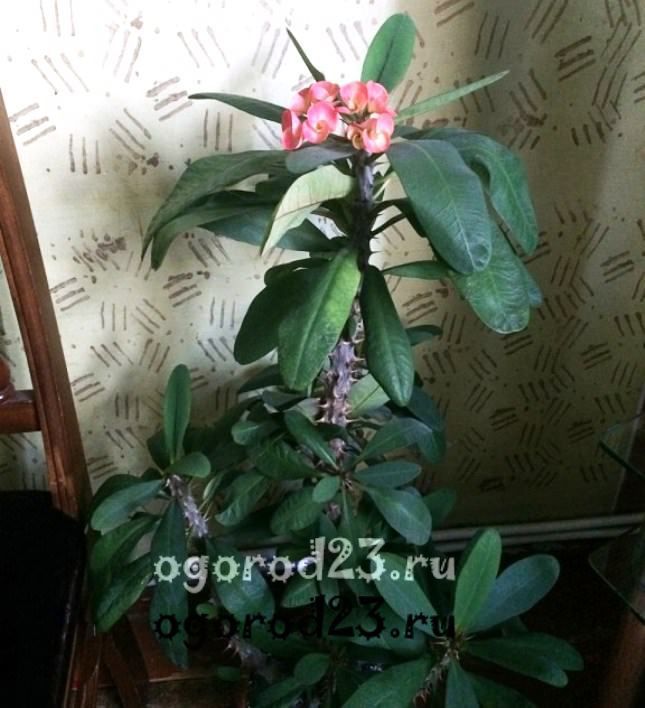
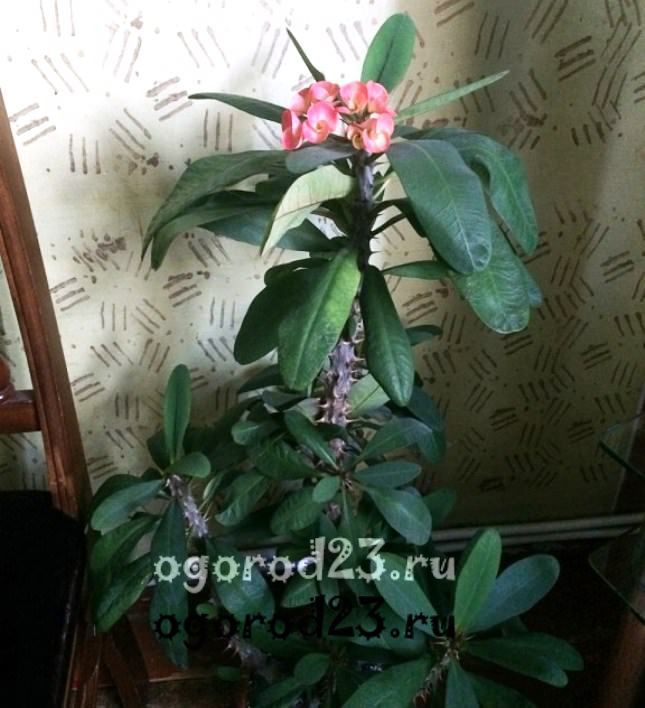
Milkweed
Dieffenbachia attracts the eye with its large decorative leaves with a variegated pattern. Its milky juice is very dangerous for the eyes; upon contact with the skin, it causes burns, redness, and itching. If it gets into the mouth or esophagus, it provokes a severe burn of mucous membranes, poisoning. If you have small children or animals at home, you better not start this plant!
Dieffenbachia, photo:
Dieffenbachia
Alocasia is an ornamental deciduous plant that is highly poisonous. Any work with it should be carried out wearing protective gloves, and not only the juice is poisonous, but even the fumes from the roots. In all thematic forums, experienced florists strongly recommend using protection when transplanting alocasia. If the root is disturbed (for example, by cutting it), you can smell a distinct cyanide odor, which is not recommended to inhale even for a long time. In case of contact with eyes, the juice of alocasia can cause loss of vision, even if inadvertently a child or animal licks a small drop of juice, long-term discomfort is guaranteed. All parts of alocasia are poisonous: they contain hydrocyanic acid, mercury, mercuric chloride.


Alocasia
Croton has very beautiful densely growing leaves, in appearance it resembles a small tree. It blooms very rarely at home, but it is often acquired precisely because of its attractive foliage. Croton is also very poisonous, if under some circumstances its juice gets into the blood (through a wound or cut when working with it), then even death is possible. In case of contact with skin, wash the area immediately with soap and water several times.
Croton
Azalea is very loved by many flower growers, it is simply luxurious, flowers have a wide palette of shades, it is often used to create bonsai. It is poisonous, its foliage contains glycoside and andromedotoxin, which, when ingested by humans or animals, cause poisoning, nausea, and convulsions. The most poisonous is considered Azalea Simsa or Indian.
Azalea
Evergreen ivy from the Araliaceae family is completely poisonous – berries, foliage, and also stems can be fatal to humans and animals. This liana-like plant is very attractive to cats, they also suffer from it more than others. It also poses a serious danger to humans.
Evergreen ivy, photo:
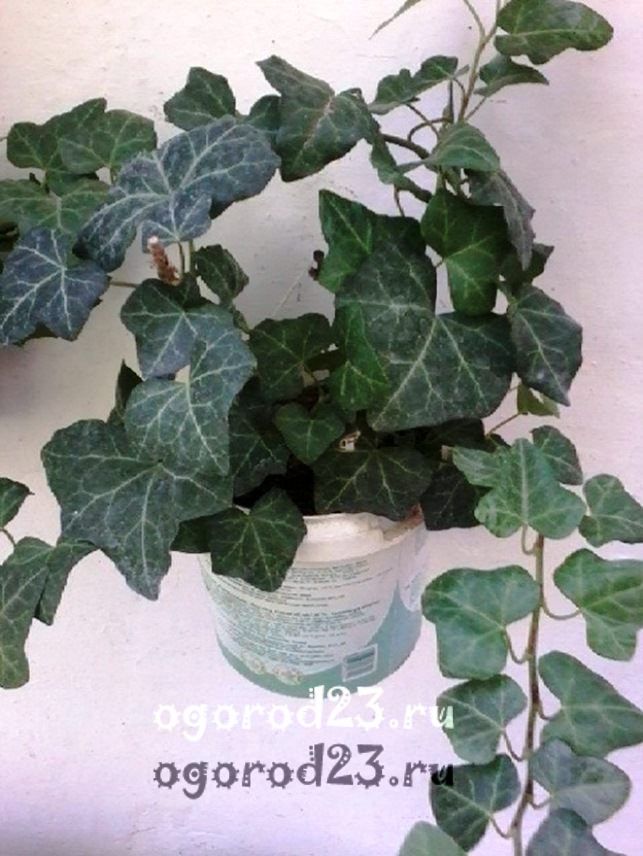

Ivy evergreen
Cyclamen is another pet with decorative flowers of an unusual shape. Its leaves look very attractive but are toxic at the same time. Of particular danger are cyclamen tubers, which contain the strongest poison, similar in strength to curare poison. When taken internally, it causes a sharp deterioration in health, vomiting, diarrhea, convulsions, loss of consciousness.
Cyclamen
Adenium attracts flower growers with its exotic look, which is given to it by thick aerial roots. From above it is decorated with multiple flowers of bright colors, different shapes. Adenium is very poisonous, its juice provokes poisoning, causes burns upon contact with the skin. It should be borne in mind that all its parts contain toxins, this plant is especially harmful for asthmatics. Milky juice of adenium is able to penetrate into the bloodstream through the skin, so think more than once before starting it at home.
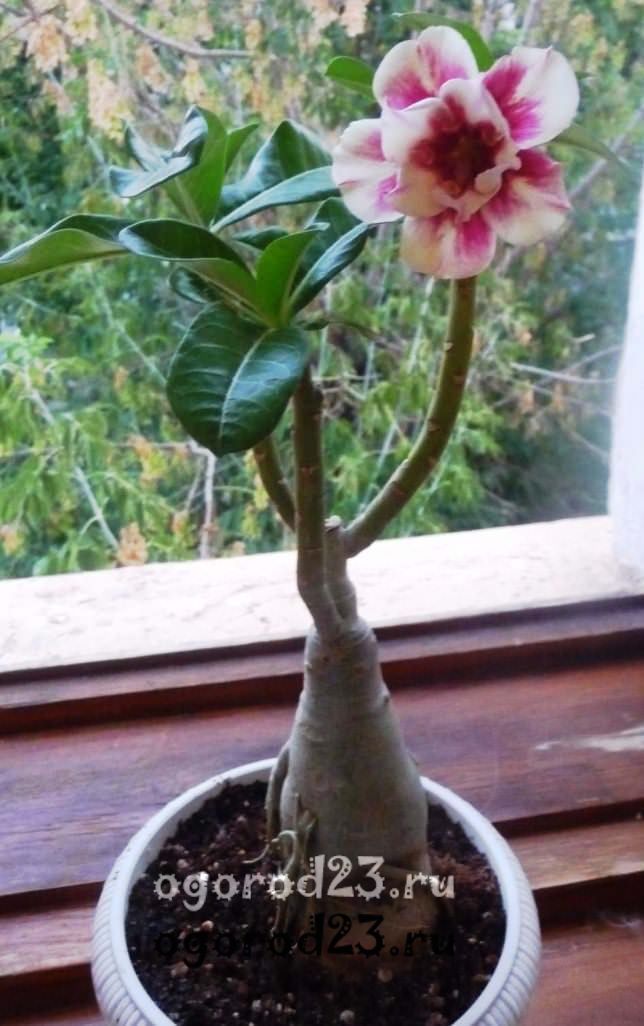

Adenium
Monstera can most often be found in offices, public institutions, but often flower growers settle it at home. It looks very impressive, grows to an impressive size, has large carved leaves. Monstera juice is very toxic, when it gets on the skin it causes burns, severe itching. If it gets in your eyes, it can significantly damage your eyesight. If a child or animal eats even a small part of the leaf, poisoning or inflammation of the gastrointestinal tract is inevitable.
Monstera
Brovallia is very attractive, no wonder its full name is Brovallia Beautiful. This small bush gives flowers in all shades of blue, lilac and white. Alas, all parts of the brovallia are poisonous, so its contact with the skin or mucous membranes must be excluded. This flower attracts pets, but its sap is very dangerous for them.
Brovallia, photo:
Brovallia
Aglaonema amazes with the beauty of the leaves, they are large, dense, with an incredible pattern, differing in variety. Despite the fact that it has a positive effect on the air in the apartment, cleans, disinfects it, it is still poisonous. Juice is the main danger to humans and animals, although berries are also toxic. If the flower is damaged even a little (for example, breaking off a leaf or scratching it during transplantation), then the juice will be released immediately. Protective gloves should be worn for any planting or maintenance work with agla-mute.
Aglaonema, photo:
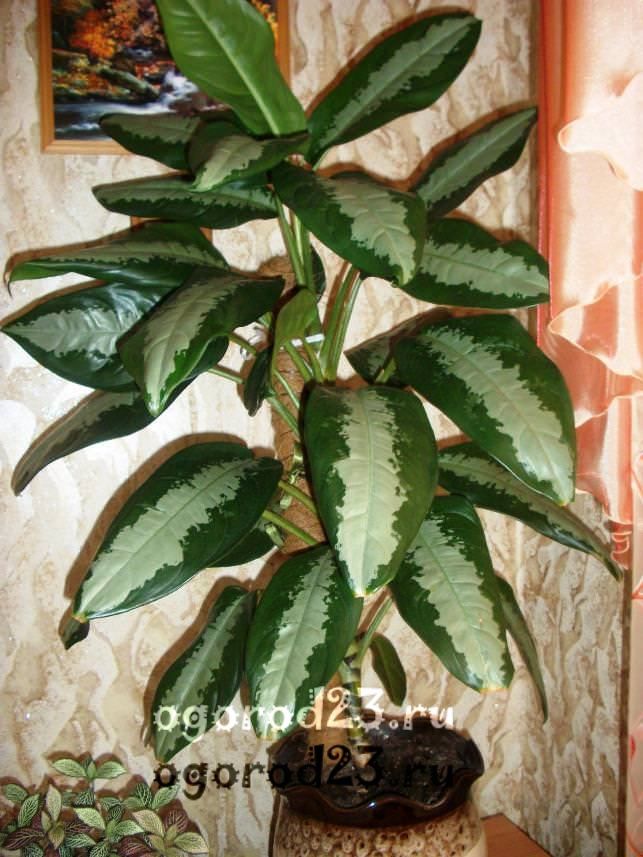

Aglaonema
Primrose flowers have the widest palette of shades, the leaves also look cute – rounded, textured, covered with small villi. Contact with these villi can cause a strong allergic reaction (burning, itching), and when primrose flowers bloom, dizziness, nausea can visit even healthy, strong people (it secretes alkaloids). You should know that the bright decorative primrose is poisonous, all of its parts are toxic and pose a threat to your health.
Primrose
Gloriosa is an exotic, truly luxurious specimen. Its unusual flowers are capable of changing their color during flowering. This attractive species is one of the most toxic among indoor plants, all parts of which contain poison. If you have children or animals at home, you will have to give up the possession of gloriosa. When ingested, it causes severe poisoning, up to and including kidney failure.
Gloriosa
Can indoor plants cause allergies? The answer will be yes – yes, they can. Representatives of the euphorbia, nightshade, aroid, and kutrov family are especially threatened. They should be handled very carefully, think more than once before starting them at home. Kutrovye are the most dangerous, especially revered adenium, plumeria, carissa, diplodesia can cause significant harm to the health of your loved ones, as well as pets.
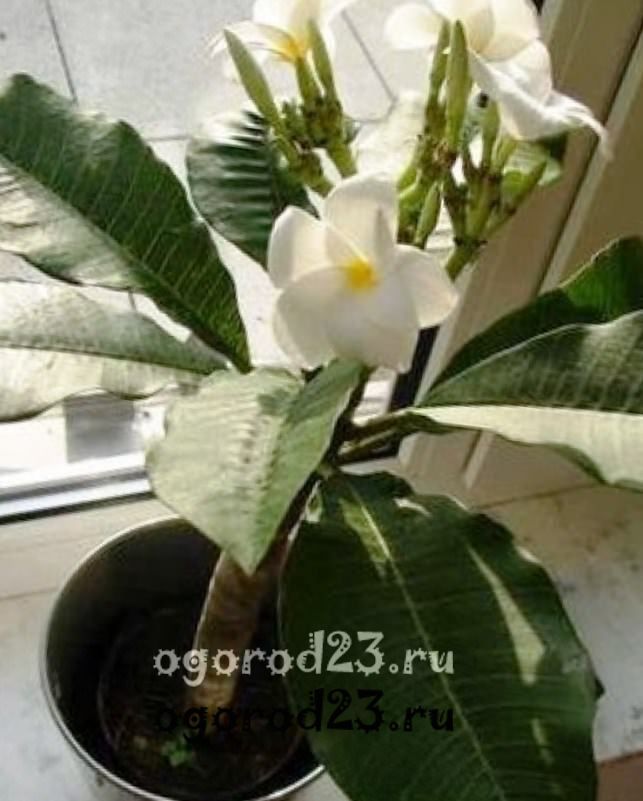
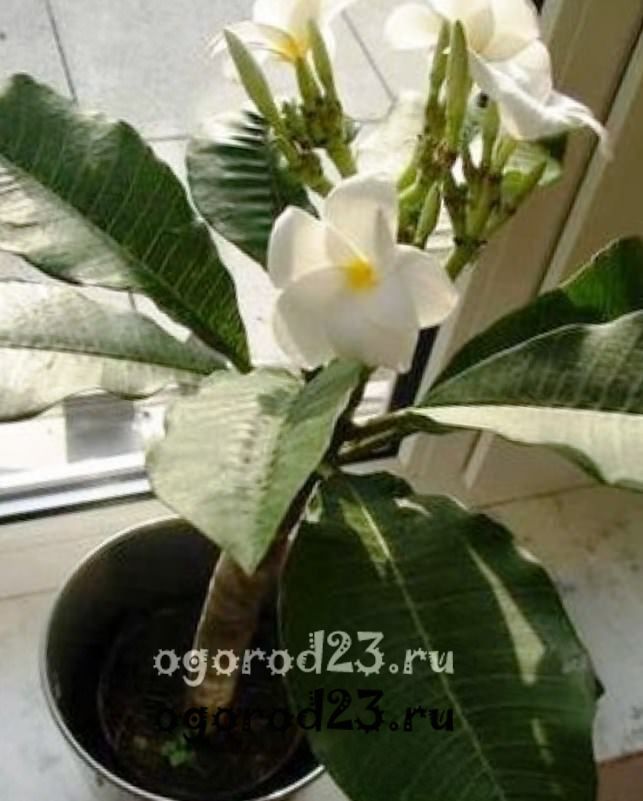
Plumeria Dipladenia Karissa
Remember that even pollen flying in the air can trigger an allergic attack. Almost all house flowers emit spores, essential oils, pollen during flowering, and in especially toxic varieties, all the secreted elements will also be by no means useful. Geranium and fern crops can cause severe allergies.
Do not forget about protection if you do decide to settle with one of them. Representatives of the aroid family also require increased attention, isolation from children and pets. Syngonium, beloved by many philodendron, contains poisonous components in its juice.
Philodendron
Be careful with euphorbia plants, each of them contains the toxin euphorin, which can cause allergies, skin inflammation, itching, and burns. Wash your hands with soap, use gloves, or better – replace them with safer green cousins. The world of flowers is diverse and amazing, among the many options you can always choose a pet that will not only be safe for health, but also useful.
Diverse ways to use
The climbing bushes of this grape are often used to disguise unsightly places in the country or near a residential building. It looks beautiful in a hedge, and is also practical: it allows you to divide areas without installing a fence. A metal mesh, ropes are used as props, wooden trunks are dug in. A maiden grape hedge is good for use near the road. With its wide leaves, it creates a thick blanket and does not allow dust and noise to pass through. It also has phytoncidal properties.
Read also: Houses in Denmark photos
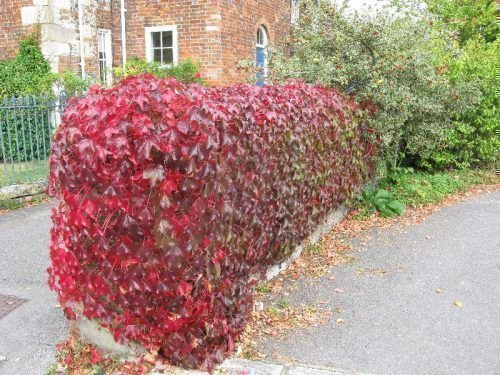
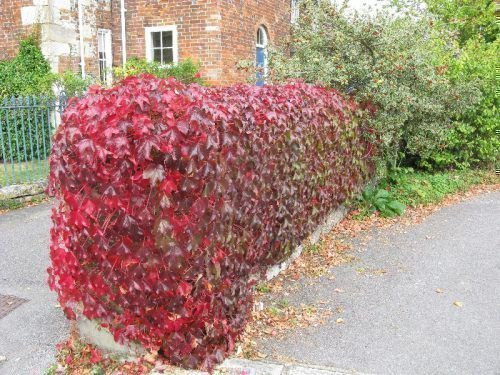
Living fence of maiden grapes
If the hedge is metal or concrete, then both the yard and the garden can suffocate in the heat from the lack of air movement, and the hedge breathes and does not interfere with the movement of air currents.
For gardeners, this plant is just a godsend. It is not damaged by diseases and insects. It is easy to look after him. To plant a plant, you do not need to select soil, almost any soil will suit it. It has a positive effect on highly moist areas, effectively drying them out. This plant easily tolerates severe frosts. It was observed that in frosts below 35 degrees, the grapes seemed to disappear, but then they recovered from the root again. However, to protect them from freezing, it is recommended that young vines be removed from their supports on the ground and stored under snow in winter.
Maiden grapes do not suffer from either a lack of sufficient lighting or an excess of sunlight.
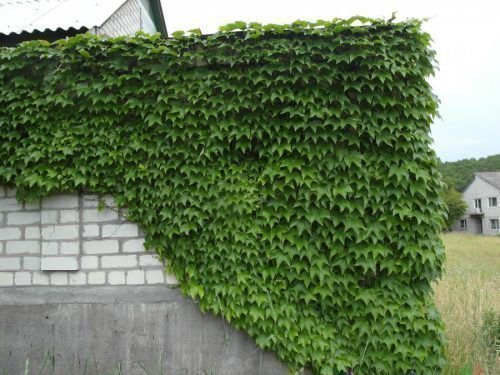

House wall decoration with Vici grapes
This variety of grapes looks great even on the wall of a multi-storey building, because its height can reach 20 meters or more. Shoots increase by 2-3 meters per year. But under favorable conditions, they can grow by 3,5-4 meters. Due to lateral shoots, the plant quickly spreads to the sides. The plant attaches itself in two ways: it has tendrils, like those of grapes, and disc-shaped suckers with a sticky surface. They cling to the slightest protrusion or crevice, and help it to reach up. Maiden grapes are such a strong plant that if you do a total pruning, it will only accelerate its development.


The tendrils of the maiden grapes hold the vine tightly
It is aggressive, clogs other landings. It can be combined only with the same vines, directing them in different directions.
Why?
Spathiphyllum
The name spathiphyllum comes from two Greek words: σπάθη (spathe) – “cover” and φύλλον (phyllon) – “leaf”. In a literal sense, the definition translates as “a sheet-like veil.” Indeed, during flowering, the plant forms a white flower, which is very similar to an ordinary leaf.
It is also believed that the Spatiffilum plant was named so due to the narrowed leaves that resemble a spata – a sword.
Women’s Happiness
The flowering of spathiphyllum is marked with the arrival of happiness and prosperity in the house.
- If a woman is lonely, then she will definitely meet her soul mate.
- If a girl has been in a long relationship for a long time, then she will soon get married.
- If a woman is married, then she will find great happiness and joy.
- If a woman really wants children, then she will definitely get them.
In addition, if spathiphyllum grows in the house, then the home is protected from quarrels, abuse.

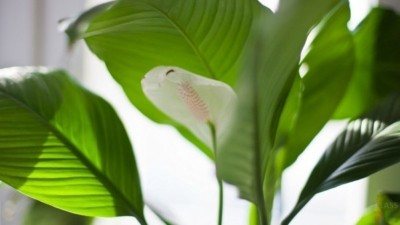
The people compare the flowers of a plant with purity and serenity., that is, it is believed that spathiphyllum is a symbol of the feminine principle. Spathiphyllum has miraculous powers during flowering. He helps childless mothers to conceive children. They associate this with the fact that the flowers of the flower are like a palm, in which a small white ear is located.
The flower ripens for a long time, which also suggests an analogy with pregnancy. At first it is green, but slowly the flower turns into a snow-white shade. Spathiphyllum pleases with flowering for a long time.
Reproduction
Those amateur gardeners who already have maiden grapes on the site do not worry about how to preserve it. Rather, the problem is how to get rid of it. For the same people who are just thinking of starting a girlish grape, the following methods can be recommended:
- Seeds (this method is rarely used because it takes a lot of time and effort).
- Cuttings (cut off the tops of the shoots so that they have at least 7-8 buds, and plant in the ground, leaving 2-3 buds on top).
- Layers (bend and dig in the end of the vine, and support the crown in an upright position; when the roots appear, cut this layering from the main plant and transplant along with the roots).
- Root offspring (develop near the main trunk; in the fall, dig up and transplant to the right place).
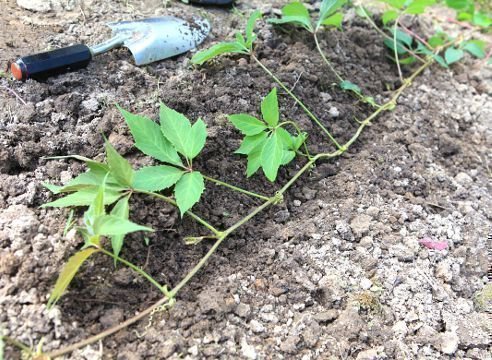
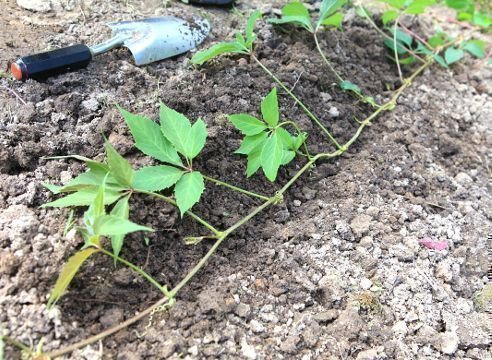
Propagation of girlish grapes by layering – dropping
To accelerate the development of the new girl’s tears plant, you can prepare good soil for it. Fine gravel, sand, broken brick are placed in a hole with a diameter of half a meter and a depth of half a meter to make drainage. Then the earth is mixed with humus in a 1: 1 ratio and filled with at least one bucket of water.
Planting and transplanting a Christmas star
Since this flower has rather fragile roots
, then you should transplant it using the transshipment method and try not to touch the old soil on the roots. Replacement of the top layer of the earth and drainage will be quite sufficient. For young flowers, you need to take a new pot, which will be slightly larger in diameter.
After transshipment, the plant must be cared for with special attention: spraying, frequent and abundant watering, the air temperature is at least 21 degrees.
After some time, new shoots will appear on the plant.
It makes no sense to leave all the appendages, try to choose the most convincing and strong ones. Cut off the shoots that remain and use them for propagation by cuttings.
Plant formation
The advantages of maiden grapes are rightly attributed to rapid growth and development. Timely pruning is a must in this case. Early spring is the best time to cut the “girl’s tears”, but it is important to be in time before the kidneys awaken. Otherwise, the grapes begin to “cry”, losing their vitality along with the juice. Removing old, dry, unnecessary branches is an important stage in the formation of a vine, contributing to its attractive appearance. The cut should be no more than 5 mm above the last kidney. The branches are laid in the right direction, at the required angle. They lend themselves well to formation and quickly adapt. But, if the vine is torn from the attachment point, it will not be able to gain a foothold there, it must be propped up or tied, otherwise it will fall.


Overgrown branches can be cut in autumn or spring.
It is important to remember that it is better to start forming a plant in the first year of its life. To do this, the first vines are immediately added dropwise and seated in the required order. Watering young lianas and cuttings in the dry summer season is carried out several times a season, and even if the soil is very dry. There is a known case when for 50 years the girl’s grapes were not watered even once.
If the plant rests on a smooth surface, after a few years, heavy branches may fall under their weight. In such places, it is advisable to install grates to support this living blanket.
Dandelions
Some pretty flowering plants don’t have the best reputation among gardeners. Dandelion is considered a weed because of its amazing vitality and ability to reproduce. In addition to light white parachutes, it can also multiply with root particles, so dandelion thickets have to be weeded several times.
Dandelion is another barometer plant. He is able to accurately predict rain for a few hours before the first drops fall. In sunny weather, the golden ones are open until the evening. But if you see the meadow turn from gold to green, it will soon rain.
Interestingly, dandelion’s flowers are not the only ones closing. Fluffy heads with seeds also know how to roll up so that the fluffs are not nailed to the ground by water, and they can fly away from the parent plant as far as possible.
Today, everyone is used to using special devices to determine the weather, and once upon a time, flowers helped our ancestors to know, for example, about the coming rain. However, there are a lot of such plants in nature. So, for example, before the rain, maples or horse chestnuts “cry”.
Amazing properties of plants
There are many colors that can “cry”. By the way, modern science calls this phenomenon called gutta (from the Latin “guta” – drop) For example, this is characteristic of the aroid family. These include dieffenbachia, scindapsus, philodendron and others.
Choosing a landing place
There is an opinion that maiden grapes spoil buildings. It all depends on the owner: timely pruning will protect the foundation from damage. The main thing is that the vines do not grow chaotically. There were cases when a plant with its weight pulled the slate from the roofs. To avoid this, you should not allow the grapes to get close to the slate or shingles. It must be carefully cut near antennas and vents, especially protected grilles. It is also “contraindicated” for plastered walls. But the concrete, wooden and brick walls, next to which the maiden grapes grew, remain clean, without dampness and mold. It is only important to rake up and remove fallen leaves in a timely manner so that they do not become a source of constant dampness.
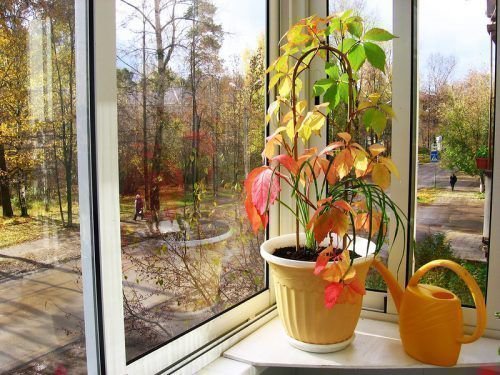
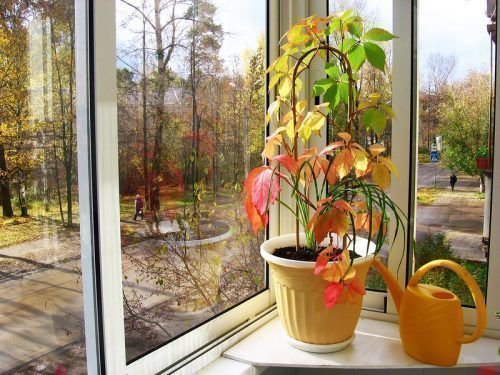
Girlish grapes can also be grown in a flowerpot
This plant also loves downpipes and poles and gives them an aesthetic appearance.
Maiden Tears is a plant that creates a beautiful look and cool shade with a minimum of effort. It is worthy of the attention of any gardener.
Diseases and pests of a flower
Usually, the Christmas star is attacked by mealybugs.
These tiny insects are able to instantly spread throughout the plant, while feeding on its juice, leaving a sticky bloom on the surface of the leaves. If you do not take the necessary measures in time, then the flower will instantly stop growing, wither and, ultimately, it will certainly die.
Against this scourge, it is recommended to wipe the leaves with alcohol.
or a solution of laundry soap. In order to achieve the maximum effect, it is better to use proven drugs: “Commander”, “Fitoverm”.
To fight spider mites
, it is necessary to spray the stems of the plant and wipe its leaves with tobacco infusion. In the future, try to keep containers with water next to the plant and spray the flower more often.
From a fungus called gray rot
, is able to protect the removal of damaged leaves, and spraying the plant with antifungal drugs.
If you suddenly find damage or any plaque on the leaves of your plant, then it may be the wrong composition of the earth. Prepare new soil or buy at a flower shop.
Mourning habits
A weatherman is a relatively unpretentious perennial plant. Loves bright light, but can accept life in partial shade.
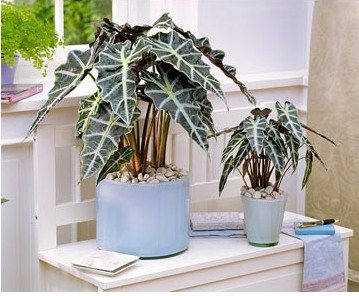
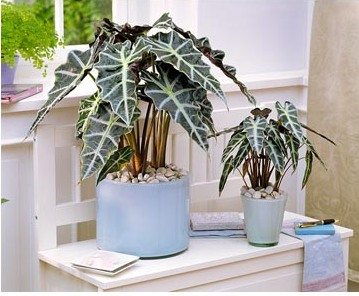
Air humidity and heat will be required by the greenhouse; frequent spraying will help maintain the right atmosphere in the room. Wipe the leathery glossy leaves with a damp cloth to remove dust and traces of calcium.
In the summer heat, timely watering and feeding with organomineral fertilizers and stimulants (Ferrovit, Izumrud, Epin) is needed; the plant is thermophilic, but not to fanaticism, the temperature above +26 is uncomfortable for it.
In the cold season, water should be more sparing. and completely stop feeding; the room temperature should not fall below +20.
The weatherman at home is growing at a remarkable pace, he needs annual spring transplant into fresh, loose soil from equal parts of sod, leaf and peat land, humus and river sand. Ready-made slightly acidic soil can be bought in special stores.

